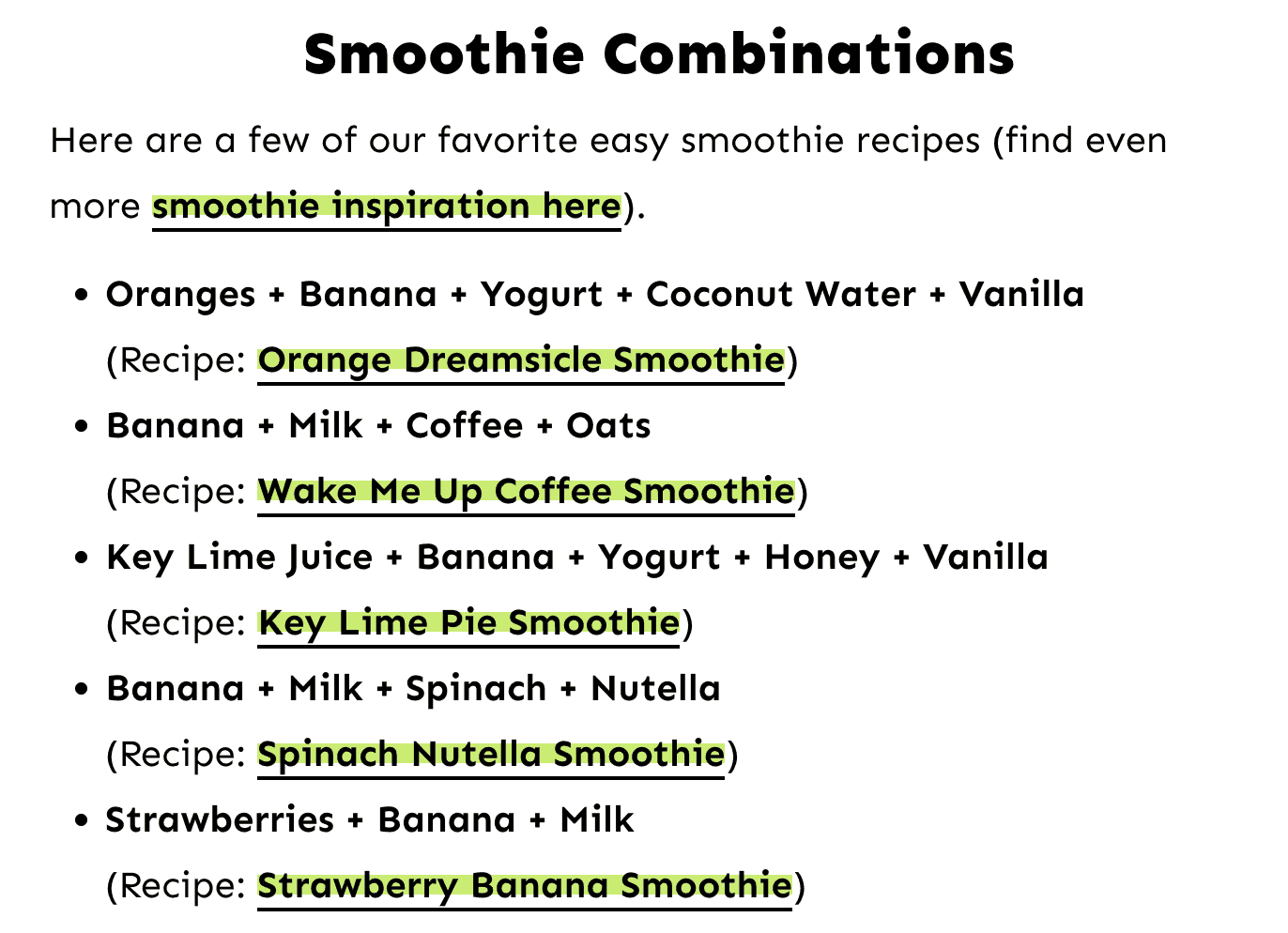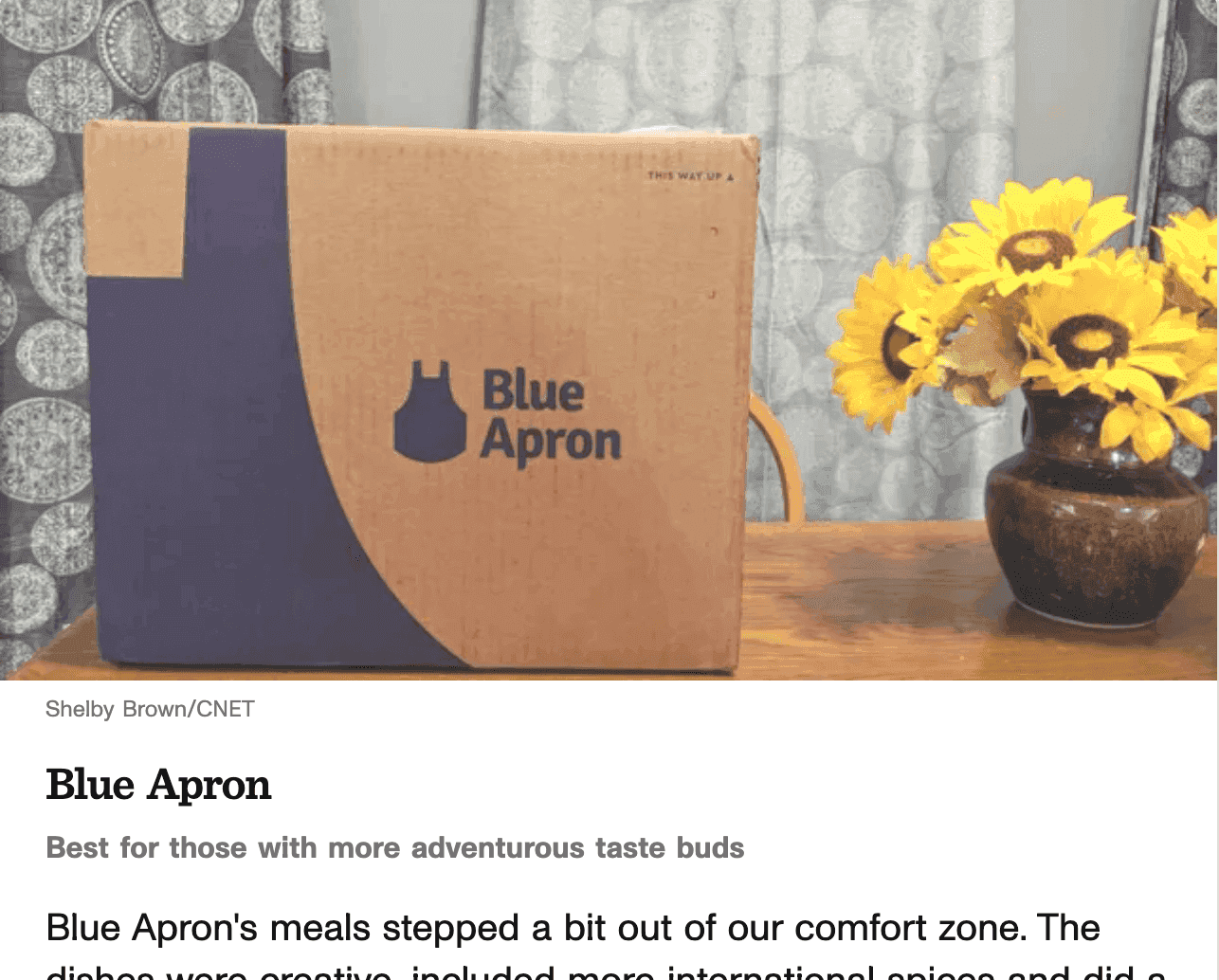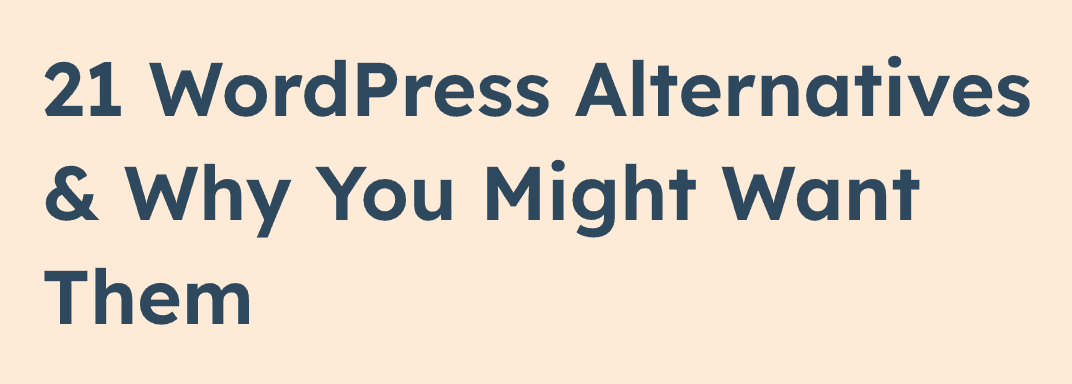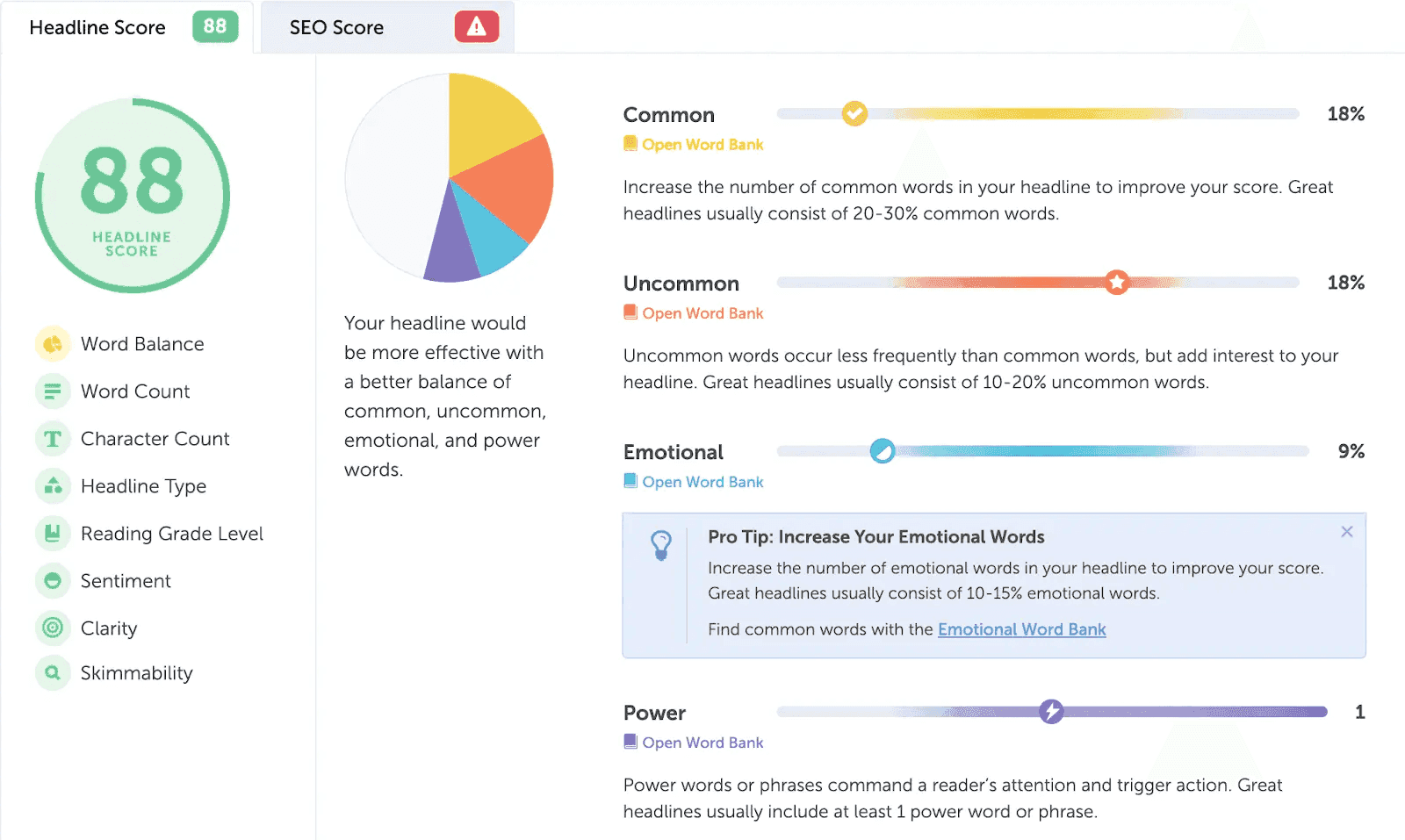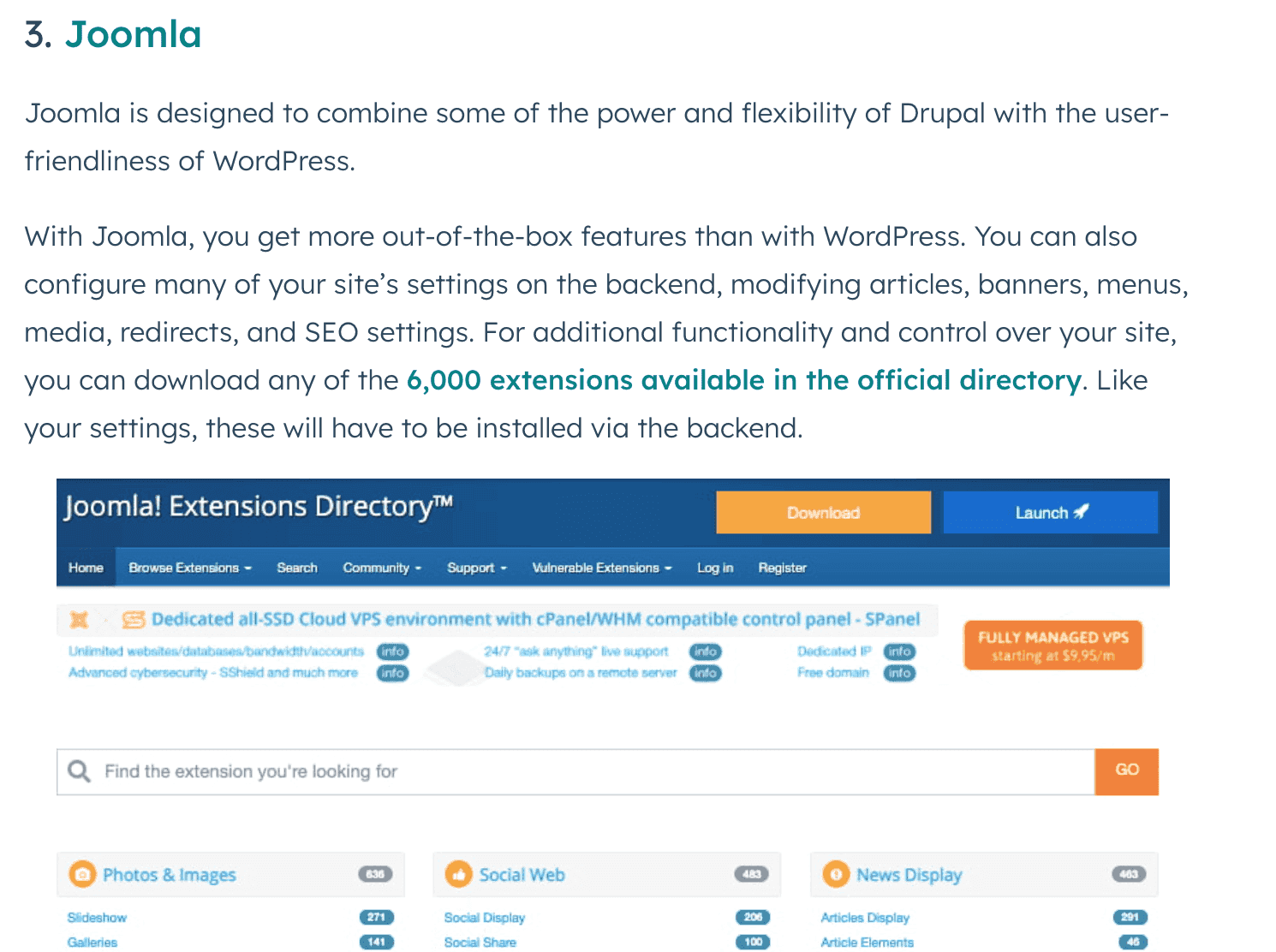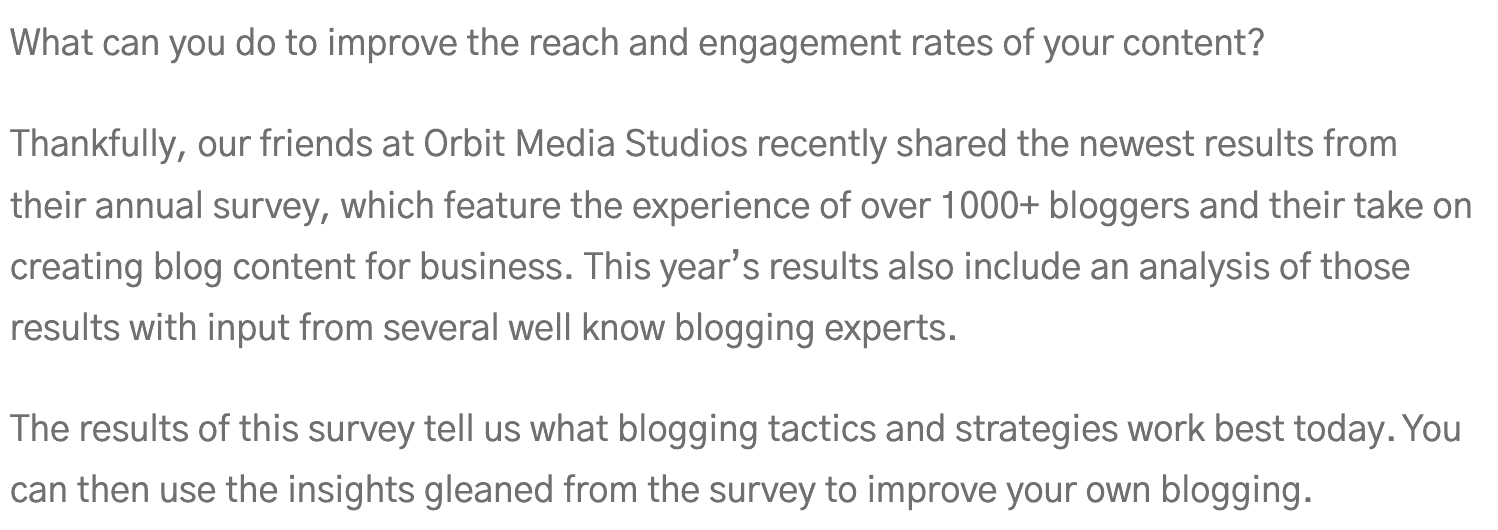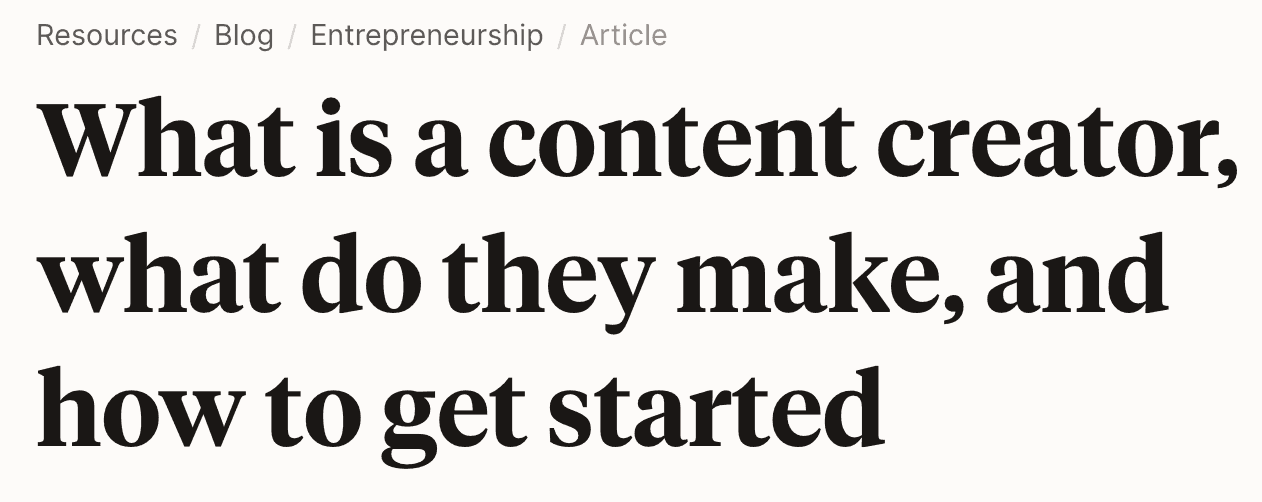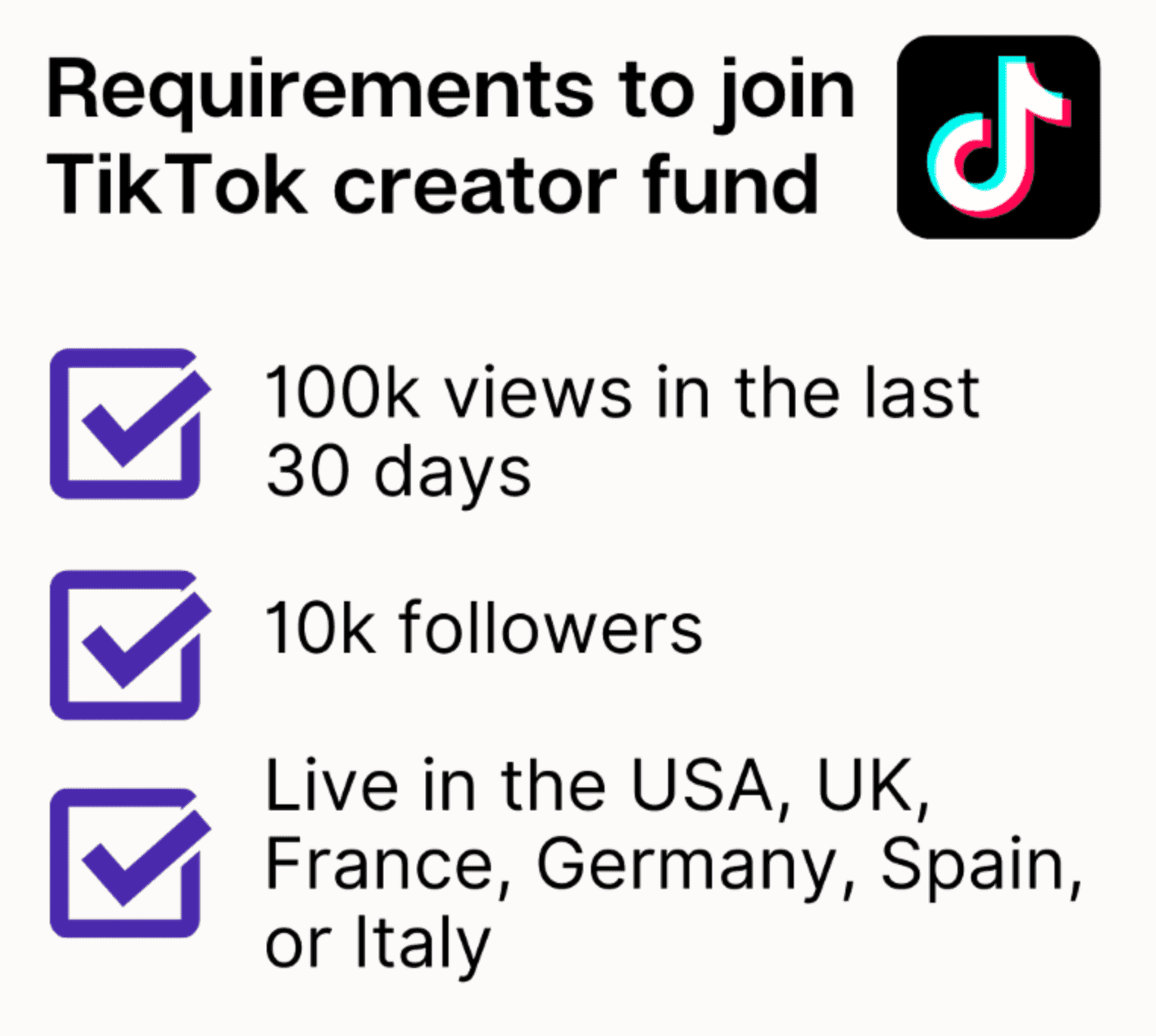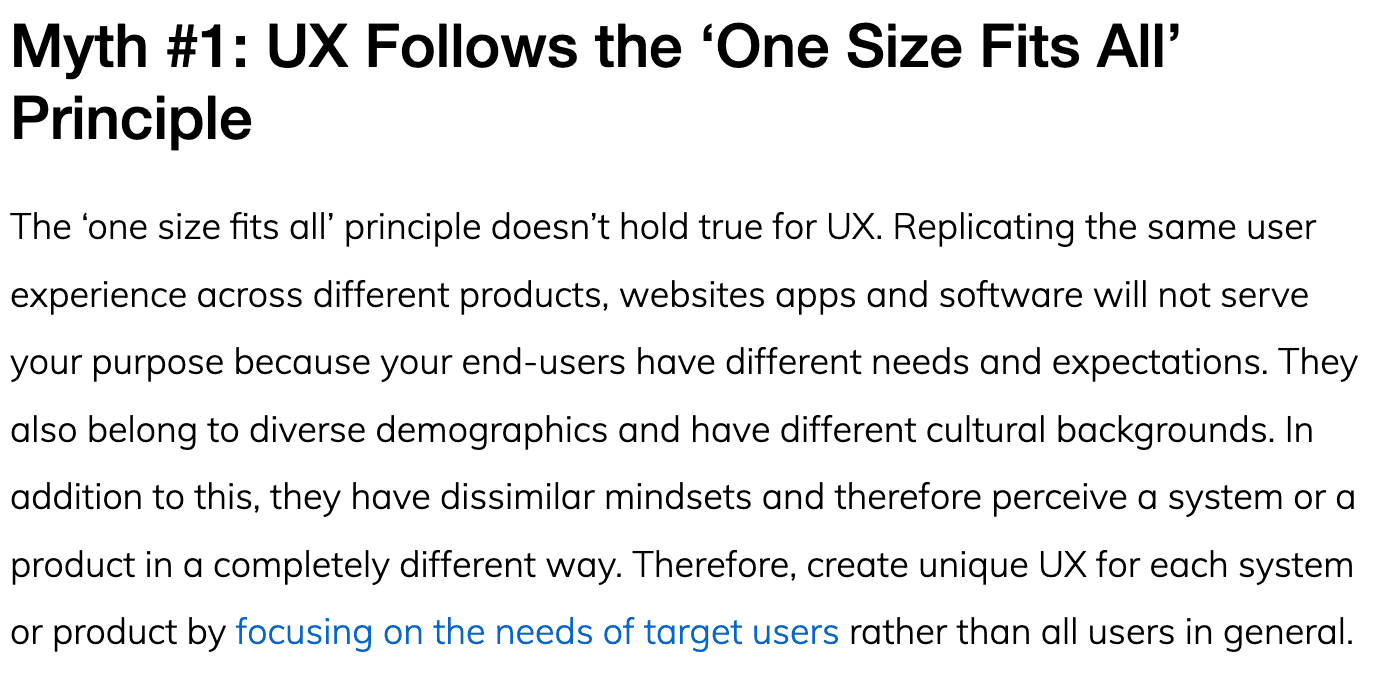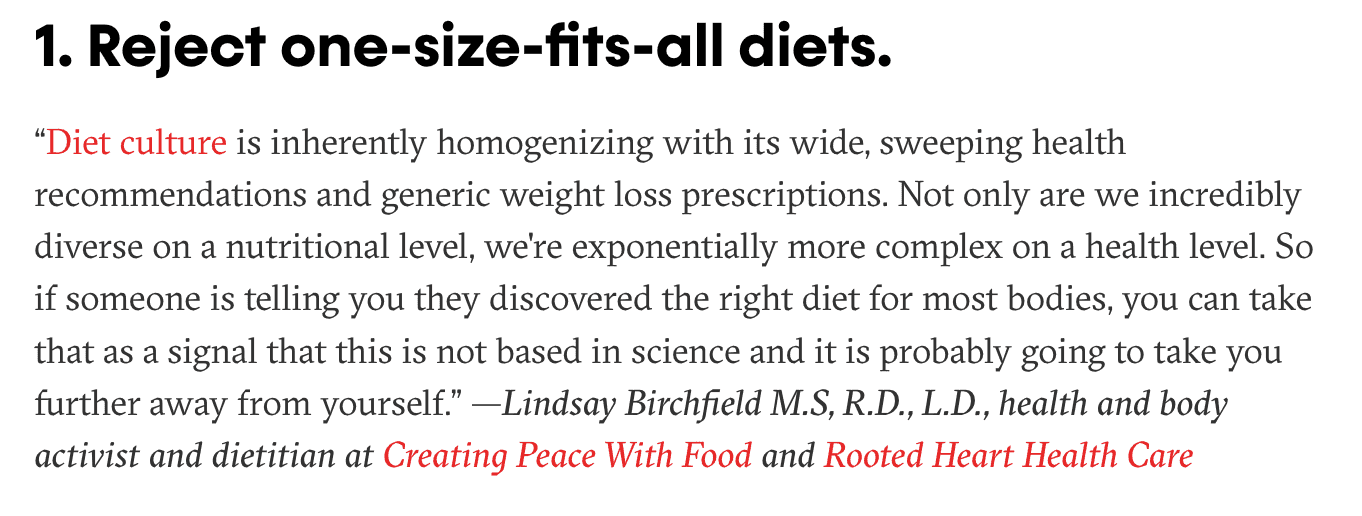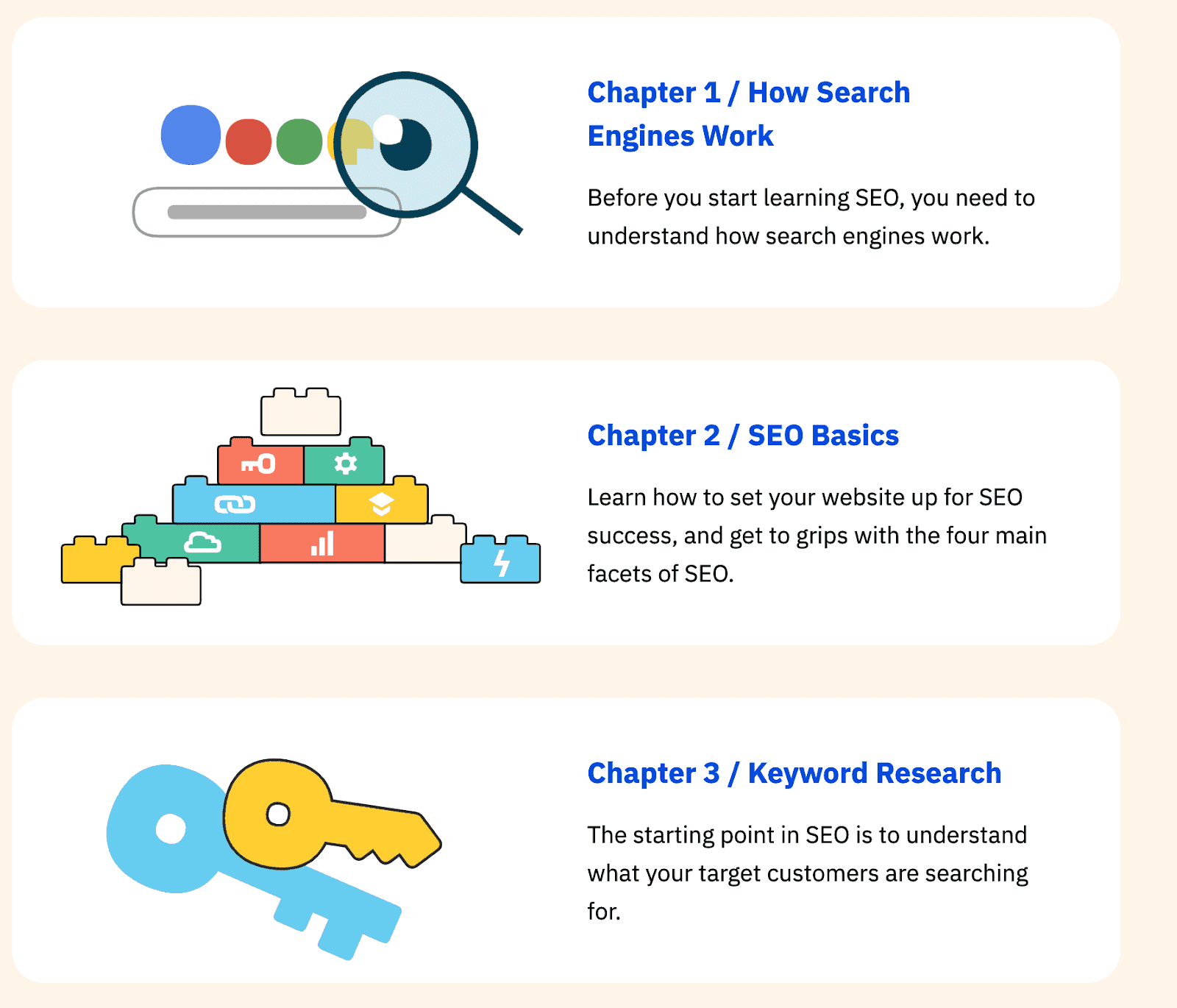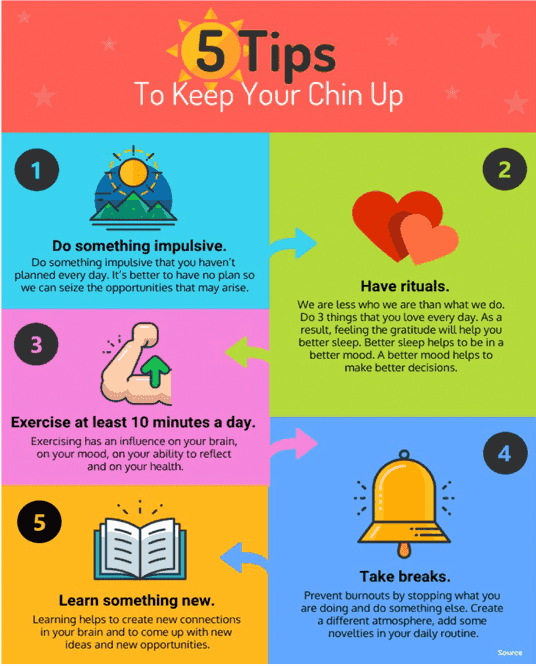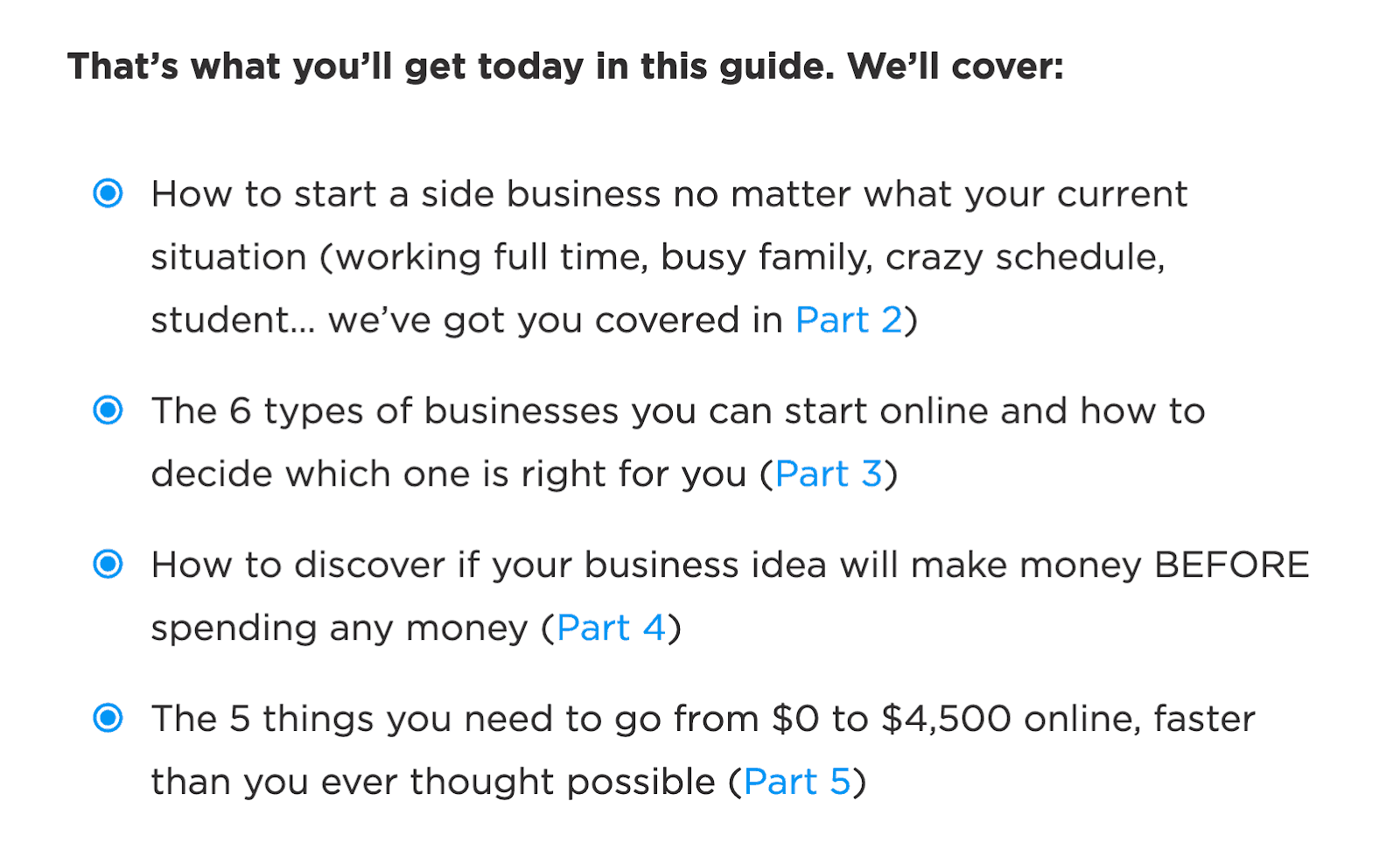Are you looking for blog post templates to kickstart your content? Try these 16 frameworks to save time and boost your confidence in your blog posts.
Recommended: Blog Post Idea Generator, Boost Your Blog’s Visibility: Top Strategies for Effective Promotion
1. Numbered List Blog Post Template
A numbered list blog post shares multiple ways to do X. Plus, they’re an audience favorite because they’re quick and easy to digest.
Title
Include a power word to boost your list’s authenticity. Create an odd-numbered list since readers view odds numbers as more trustworthy and highlight the readers’ benefit.
So, your overall headline formula is:
- X [Power Word] Ways/Tips To [Readers’ Benefit]
Example:

Listed Paragraph Example:

Educate your audience through a handful of items and explain them in depth.
Example: Teach Better list is short since it includes more information within each point.
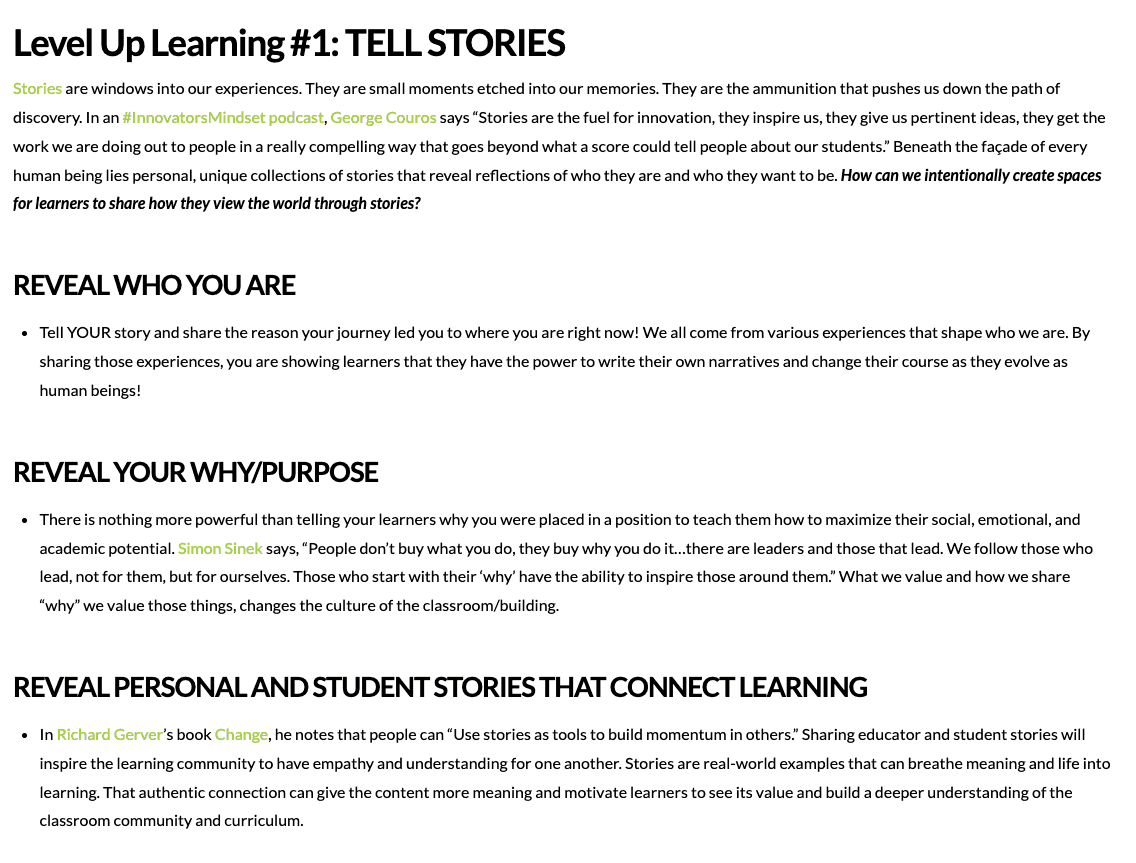
Conclusion
Sum up in-depth lists by recapping the bullets you’ve shared. Longer lists, usually, are best without a conclusion since the array of bullet points outlines the blog’s goal.
2. “How-To” Blog Post Template
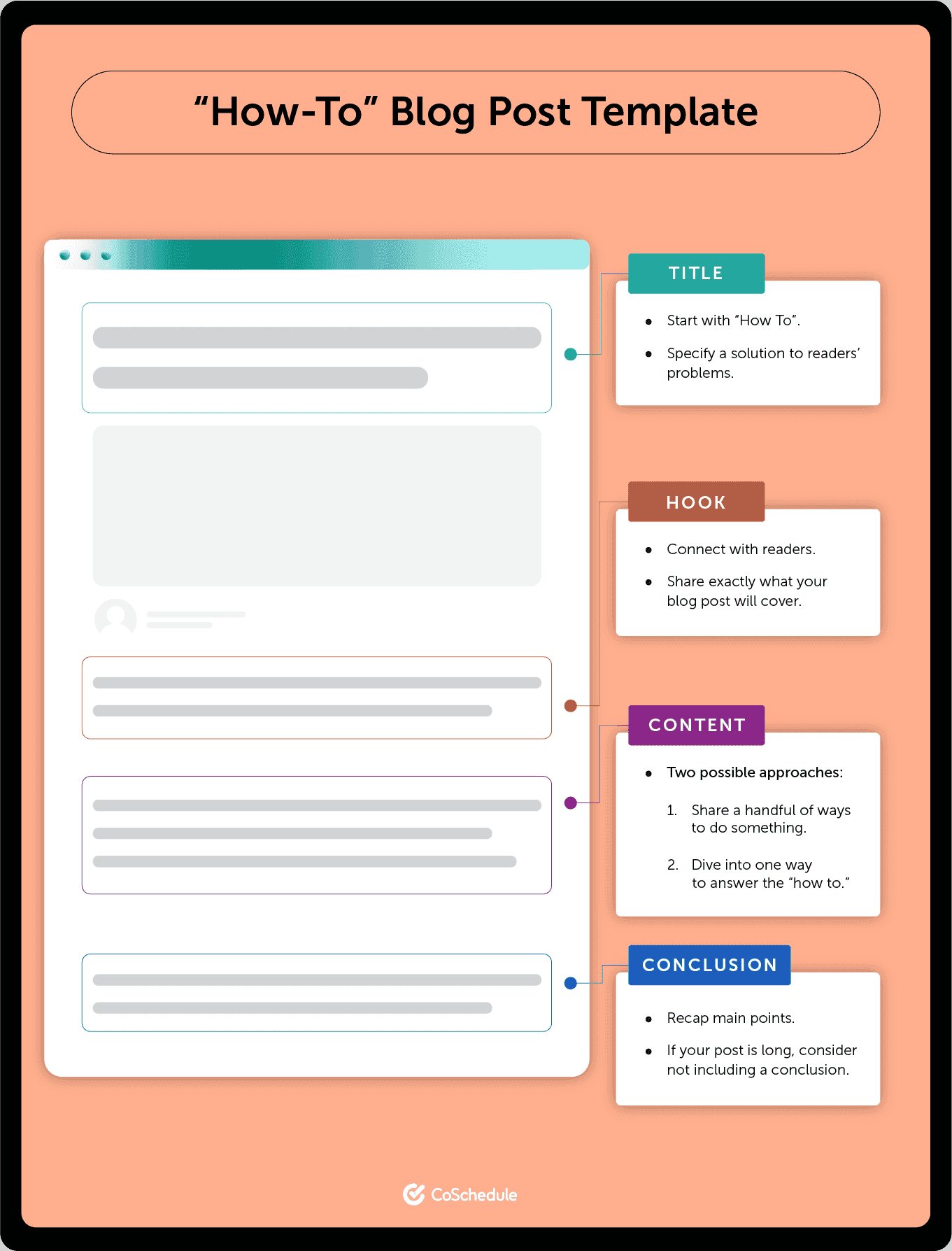
“How-to” blog posts are comprehensive pieces explaining – as their name suggests – how to do X. To position yourself as an authority in your field, you must write comprehensive “how-to posts,” providing helpful content that helps readers.
Title
The best “how-to” post headlines typically start with “how-to” and either specify the solution to readers’ problems or address their audience directly.
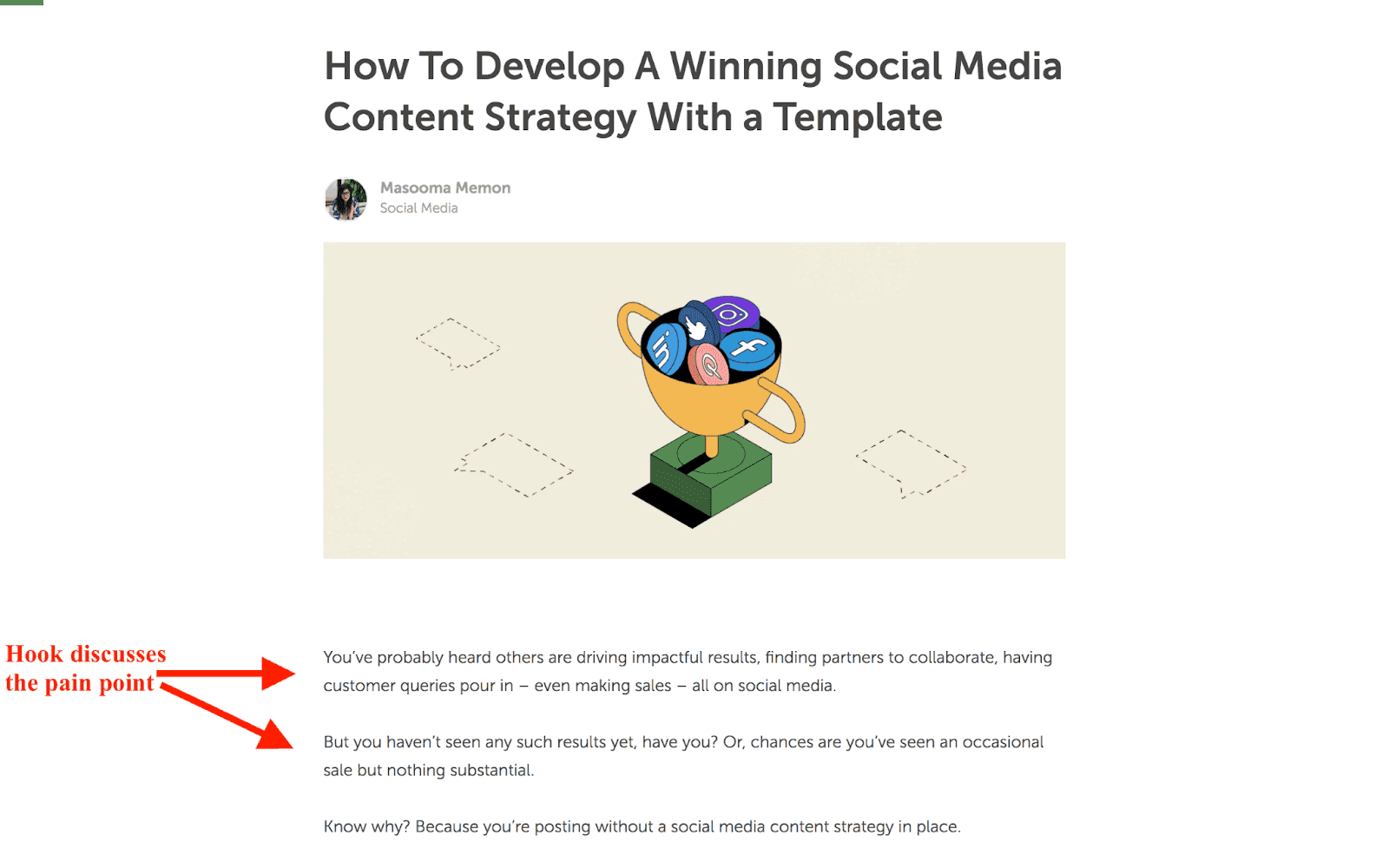
This post, for instance, solves a particular pain point. In this example, the issue is not getting the desired results.
So, your go-to “how to” blog post headline can look like any of these:
- How To [Keyword]: [Target Audience] Guide
- How To [Keyword] Without [Something]
- How To [Keyword] In X Steps
Hook
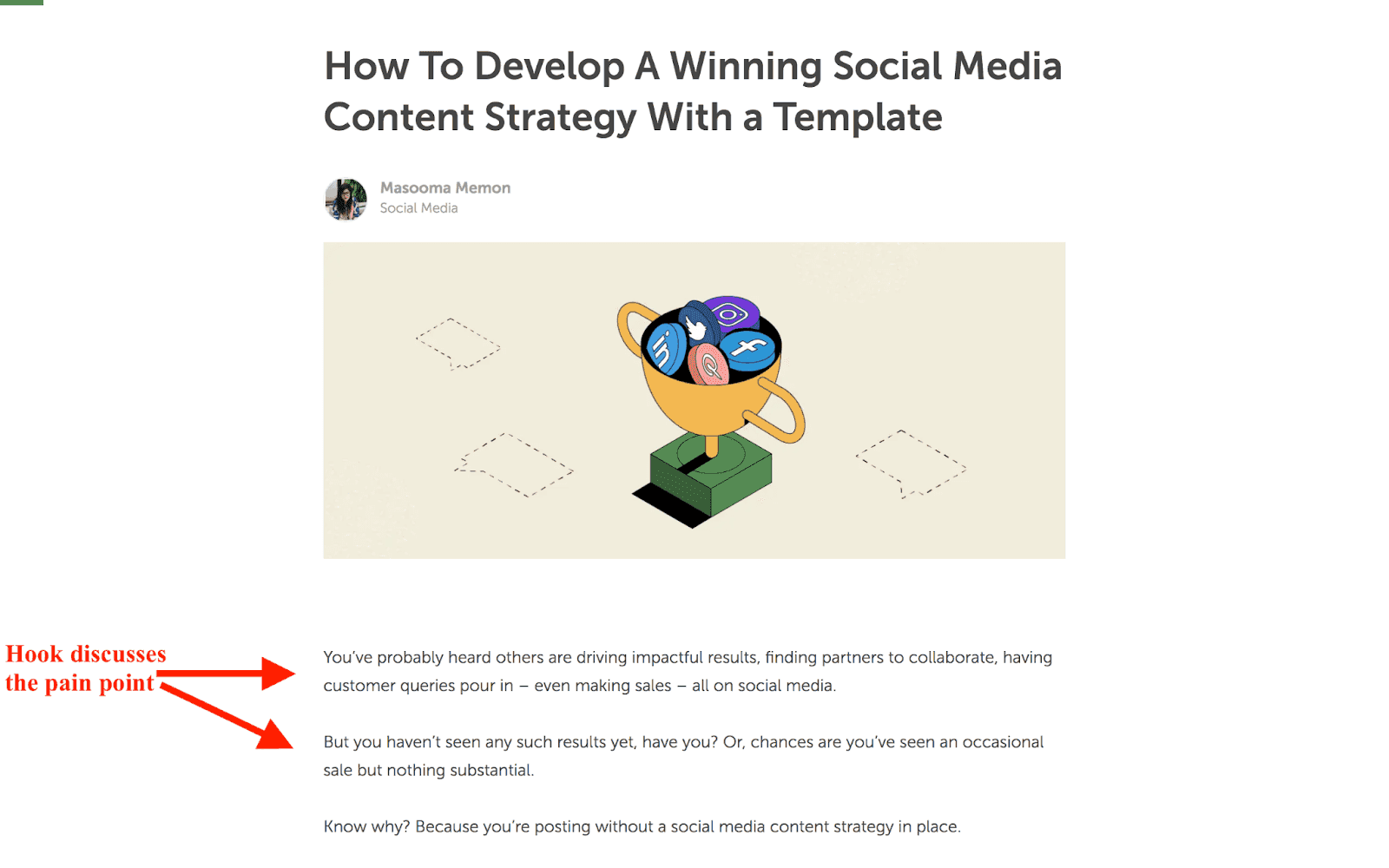
The “How to” post’s opening lines should aim to connect with readers to convince them to read your piece. Set the right expectations by sharing exactly what you’ll cover.
Content
Take two approaches to draft a “how to post”:
- Share a handful of ways to do something.
- Dive into one way to answer the “how to.”
Let’s say you’re teaching people how to make smoothies. You could share multiple ways to make smoothies.
Or you can share your signature recipe only.
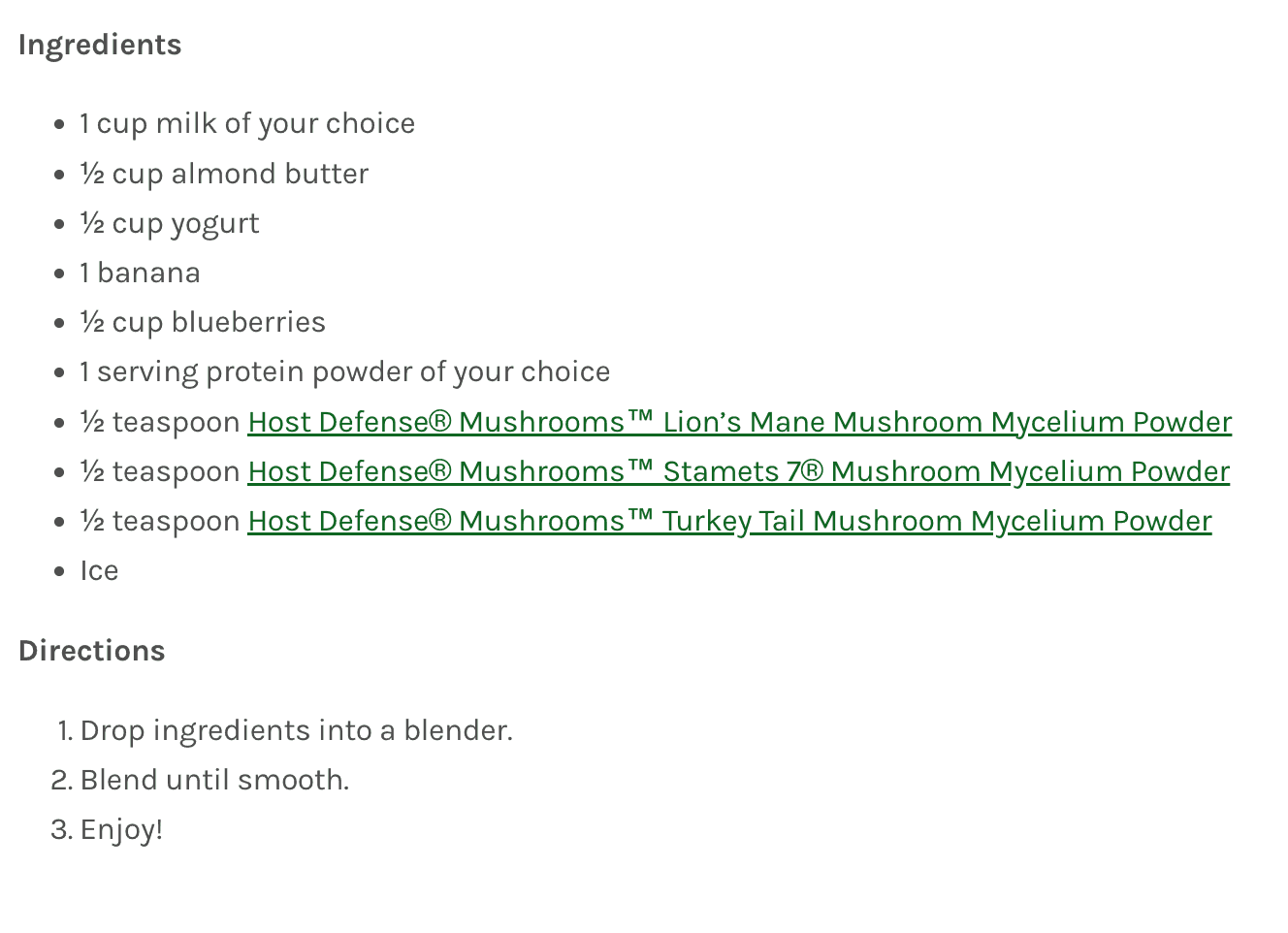
Pro Tip: Use supplementary visuals such as screenshots, explainer videos, and checklists to explain the “how to” process.
3. Step-By-Step Blog Post Template
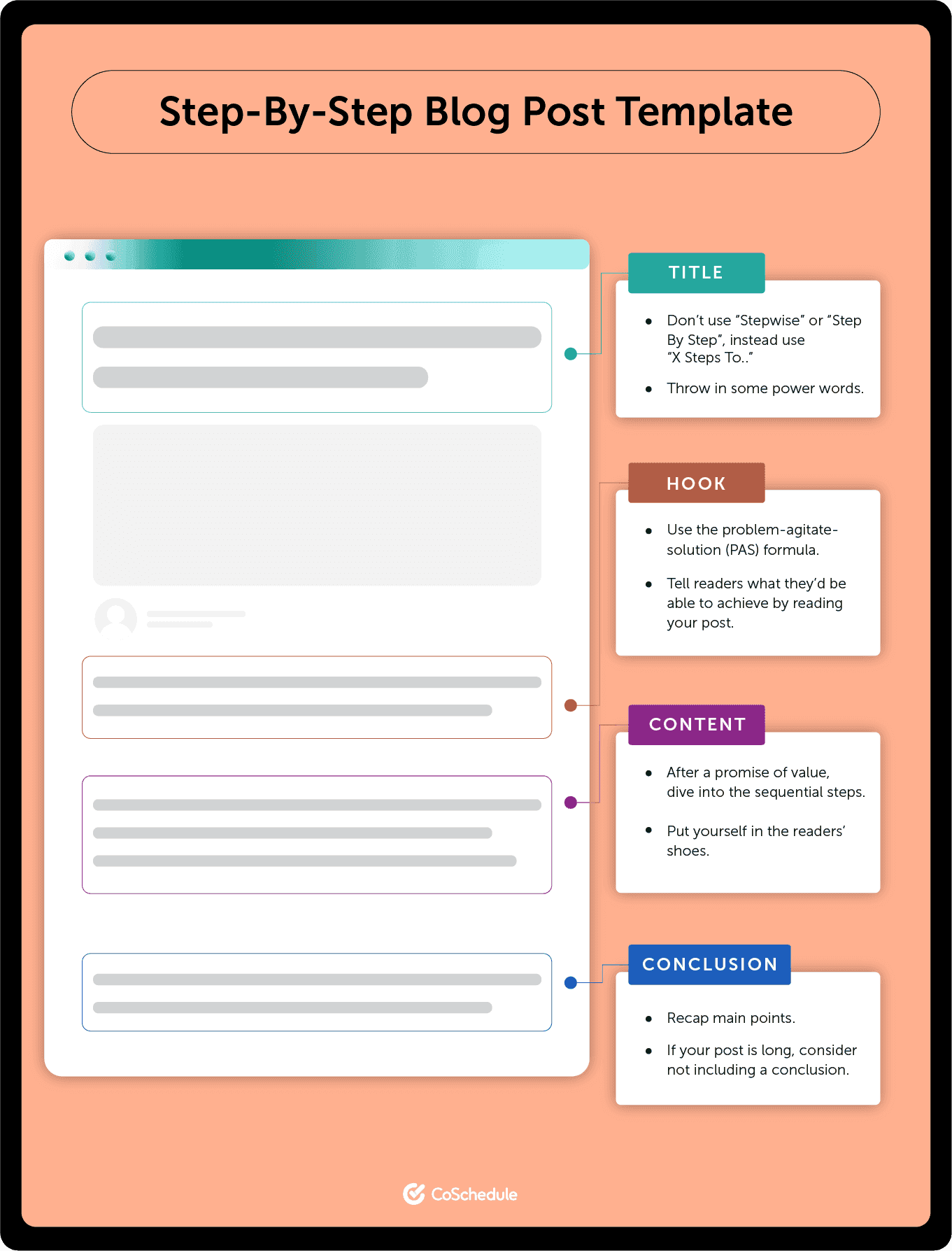
This type of post walks readers through each step to do X. Step-by-step blog posts bring value to your audience by guiding them through the process.
Title
When writing a step-by-step blog post it is essential to make sure your title clearly conveys the topic you are writing about.” Make sure to incorporate power words to improve the chance of your blog ranking.
Your headline template will read like this:
- X Steps To [Keyword/Topic] The [Power Word] Way
- How To [Topic] In X [Power Word] Steps
- A Step-By-Step Guide To [Keyword]
In action:

Hook
Use the problem-agitate-solution (PAS) copywriting formula to write your hook here. Tell readers what they’d be able to achieve by the end of the post to keep them glued.
Business News Daily uses the PAS formula to set the stage for the content.

Content
After an engaging your audience through your title and hook, dive into the sequential steps.
“How to start a small business” lists the best approach for starting a small business in order.
Pro Tip: Create a successful stepwise blog post by putting yourself in your readers’ shoes to understand their questions.
4. Product Comparison Blog Post Template

The product comparison blog helps on-the-fence readers choose from two or more choices by studying their differences. To gain your audience’s trust with these posts, provide unbiased product details readers need to make an informed decision.
Title
Use the targeted keyword upfront. Then, pair it with its value (example: which one to choose/which one is best for you). Together, this would read like this:
- X vs. Y: Which One Should You Choose/Which Is Best?
- X vs. Y: Which Tool Is Better For [Pain Point/Target Audience]

Here are more headline formulas:
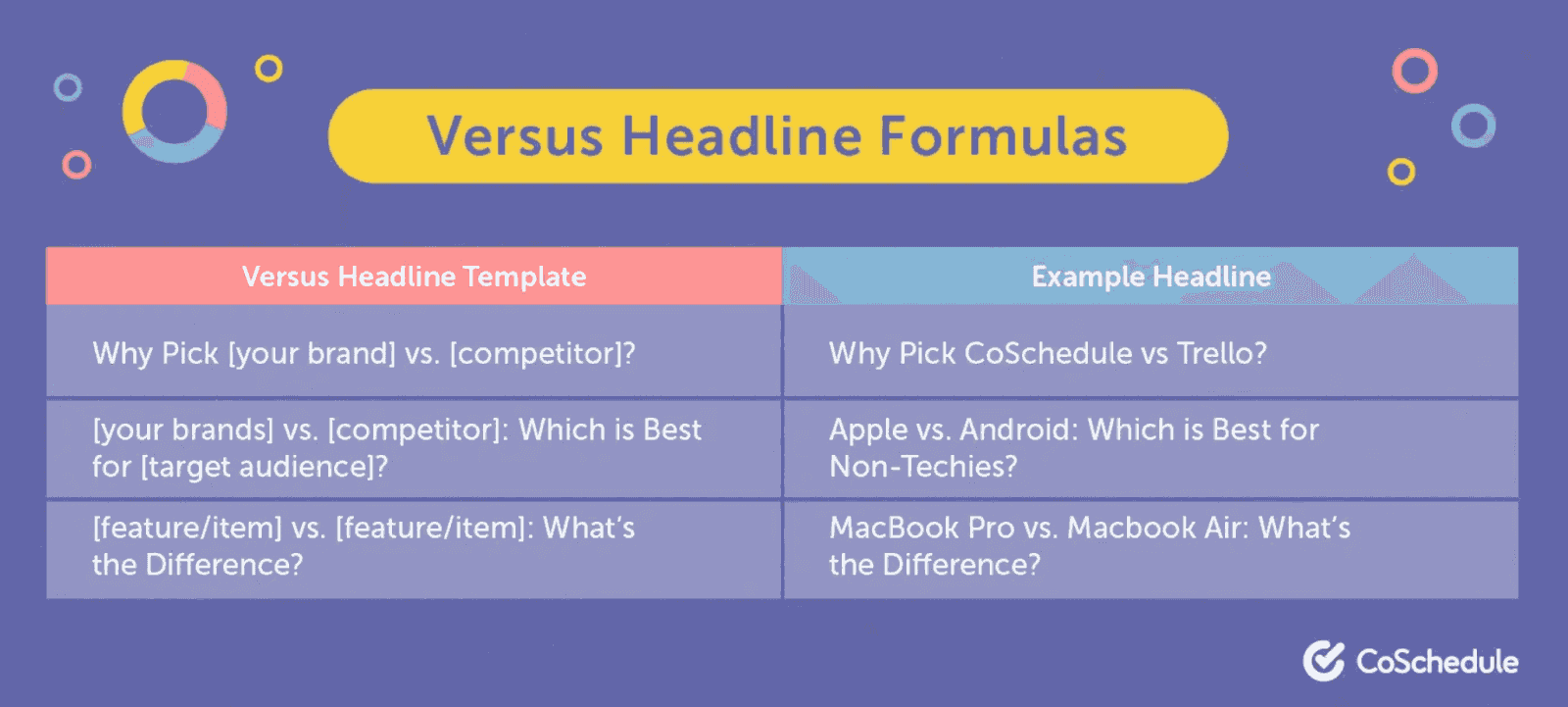
Hook
Start with a question so readers can tell you understand their pain point. Also, mention how you’ll compare X against Y – features, pricing, etc. to set the right expectations.
Content
Either compare both the products side by side under one common subheading like The Spruce


Or divide the post into subheadings for different products like CNET:
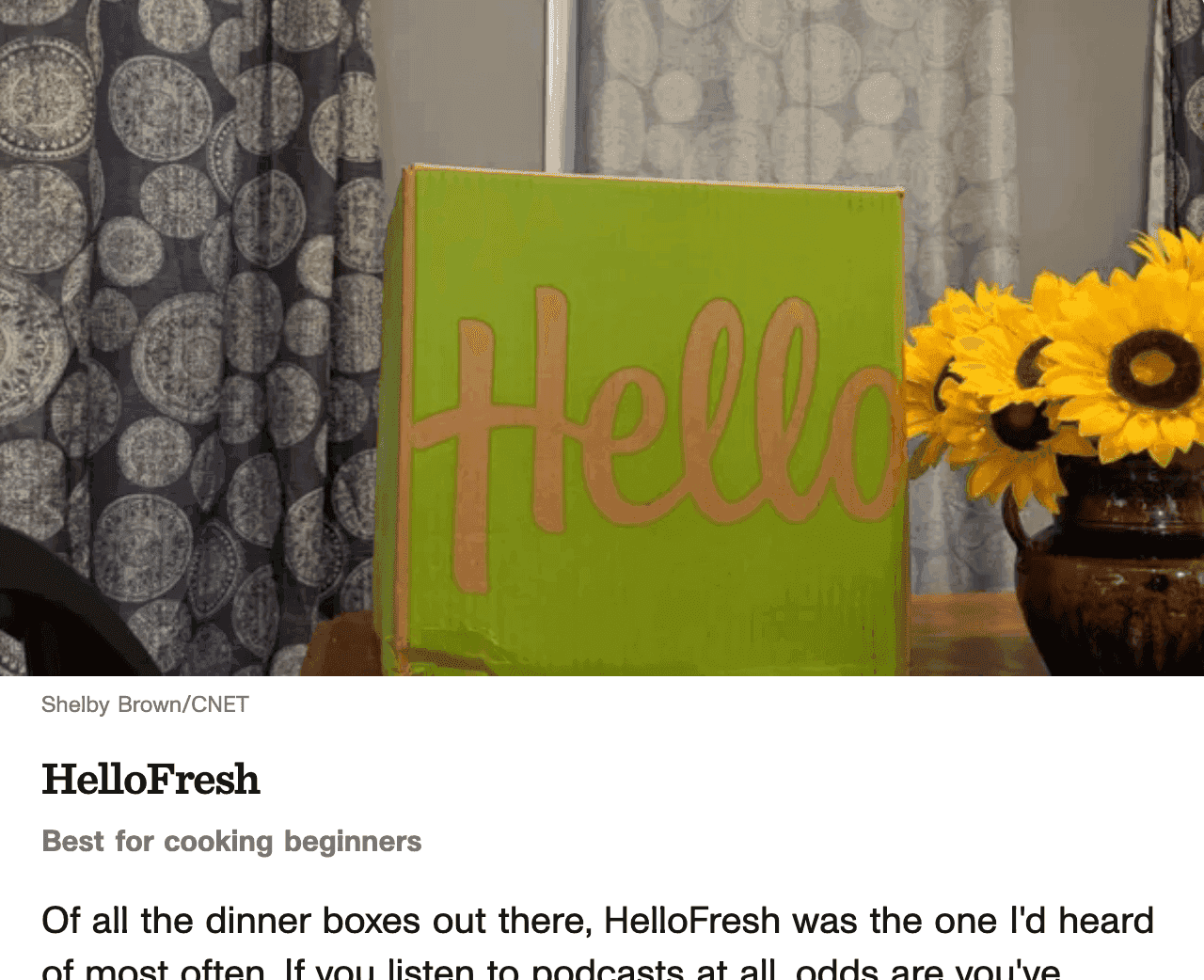
Pro tip: Create a comparison table or infographic summarizing product features you’ve compared. This doubles your value and increases the time readers spend on your page.
Conclusion
Summarize which tool is best for the specific audience as this example does:
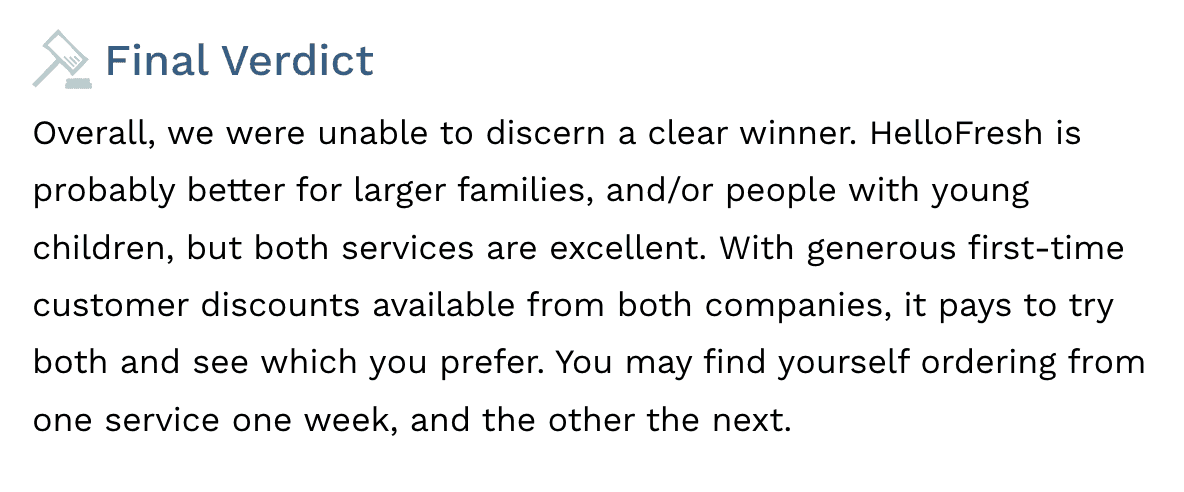
5. Alternatives Blog Post Template
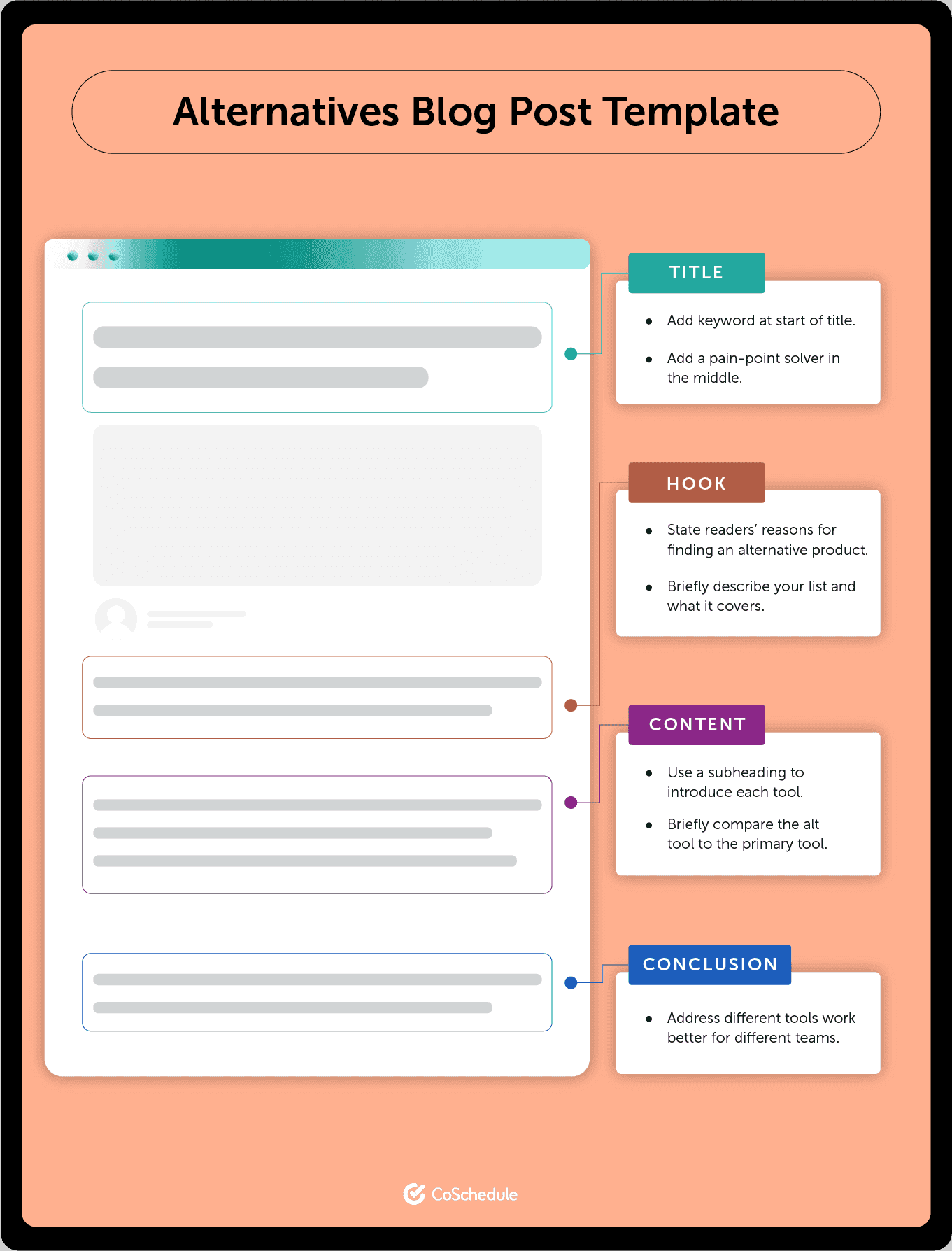
An alternative blog post provides other options similar to a particular tool/product. This post offers maximum value by ensuring you provide enough details to help readers call the shots.
Title
Add the keyword toward the start of the title with a pain point-solving pointer in the title.
Example: HubSpot includes an additional pointer in the title.
A simple headline template will be:
- [Power word] X Alternatives
Pro tip: Write multiple headlines. Then, run them through CoSchedule’s Headline Studio to determine the most effective one.
Hook
Start with stating your readers’ reasons for searching for an alternative product. For instance:
- Finding tool X expensive?
- Have trouble using tool X?
Then, briefly describe your list and what it covers.
Content
Use a subheading to introduce each tool. In each section, briefly compare the alternative tool you’re suggesting with the primary tool and share its outstanding features.
HubSpot recommends multiple alternatives while comparing it against its competitor.
Conclusion
Address that everyone is different and that various tools will work better for specific teams.
HubSpot does this well:
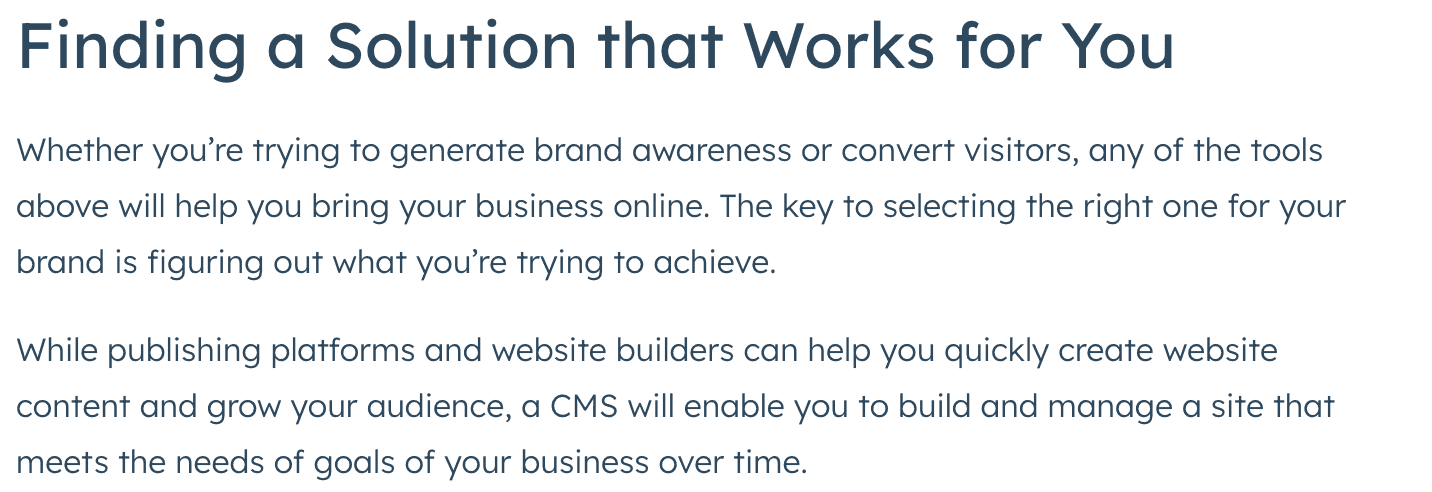
6. Survey Blog Post Template
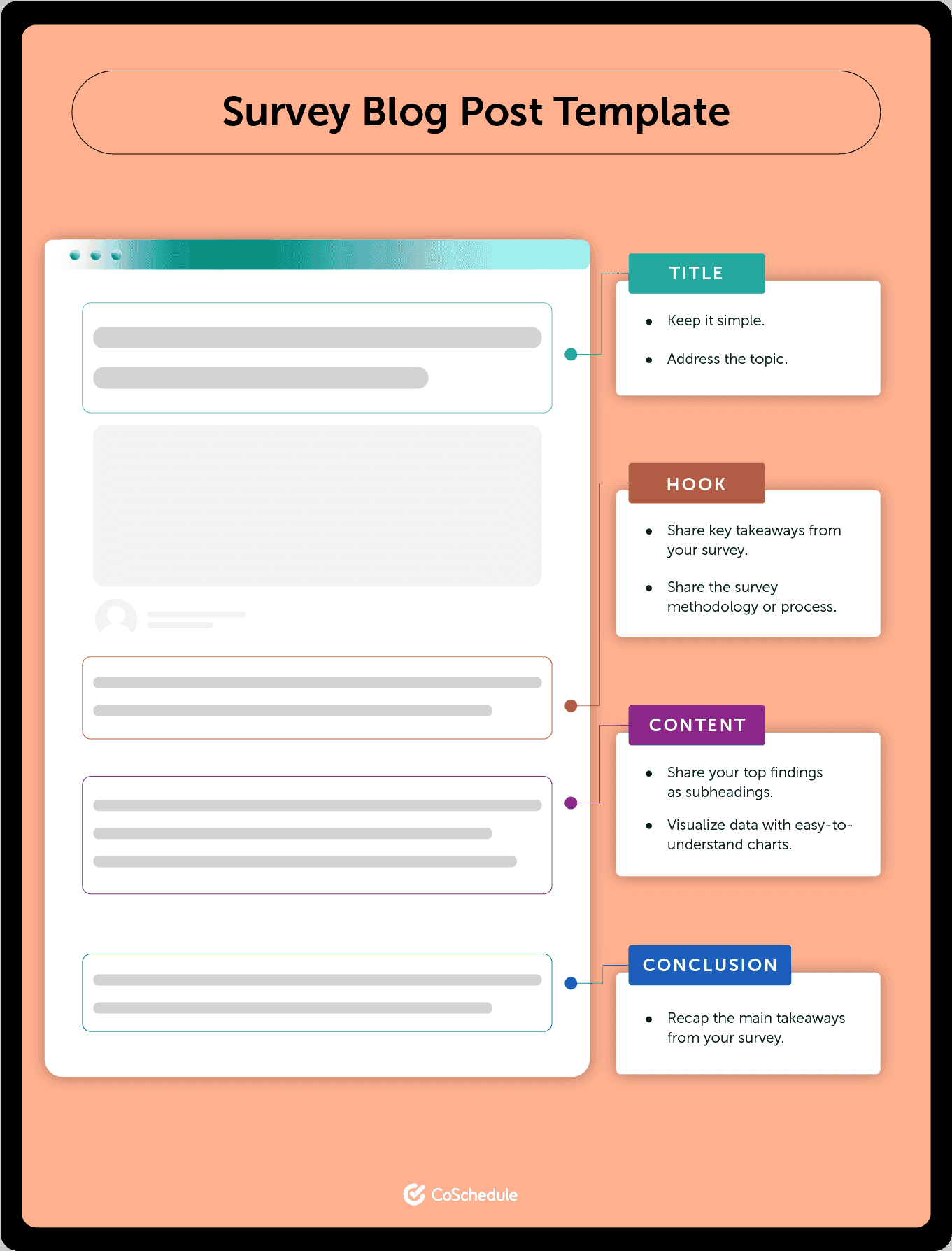
A survey blog post shares findings of original research you’ve conducted. These pieces attract a lot of backlinks in addition to helping position you as the industry authority on the topic.
Title
Keep it simple and address the topic as Top Dog Social Media does here:
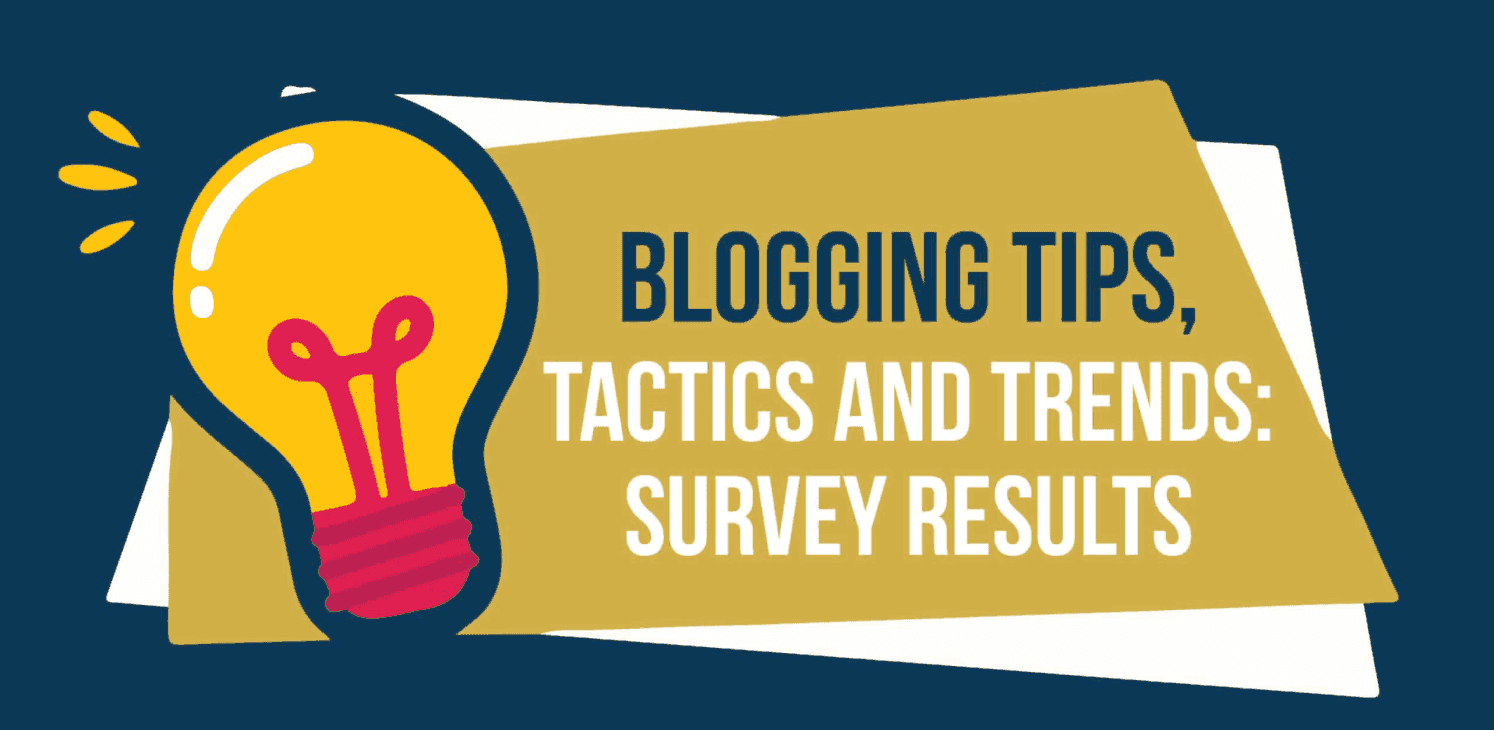
Headline formula ideas:
- The State of X [Year]
- X Things We Learned After Analyzing Y
Hook
Start with sharing key takeaways from your survey. Then, share the survey methodology or process and details of what you’ve learned.
For best practices, “Blogging Tips, Tactics and Trends: Survey Results” ideally outlines a survey hook.
Content
Share your top findings as subheadings throughout the post. Here, visualize data with easy-to-understand charts as Top Dog Social Media does:
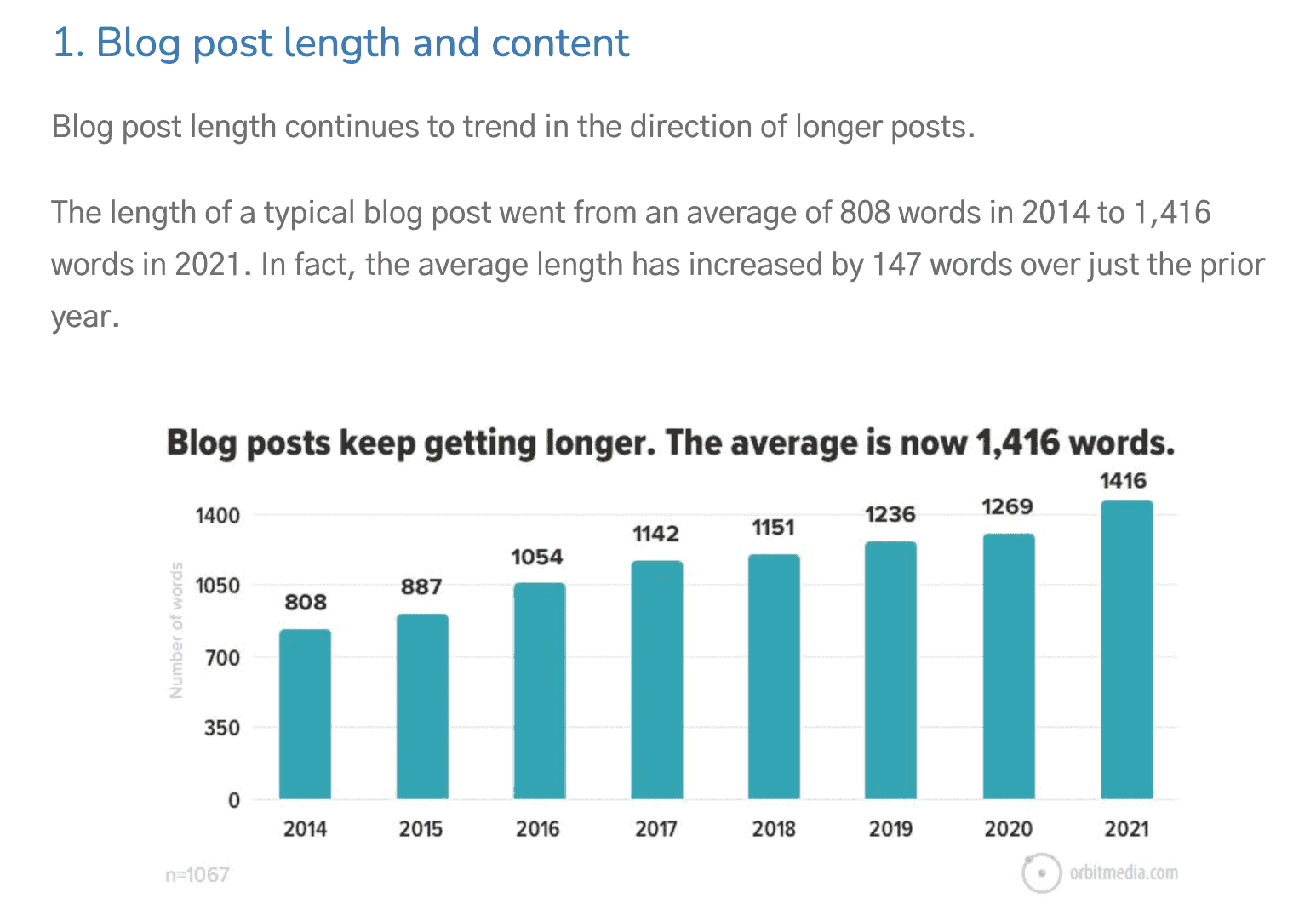
Conclusion
Recap the main takeaways from your survey. Reiterate that statistics provide information, but not all tactics will work for every business.
7. Case Study Blog Post Template
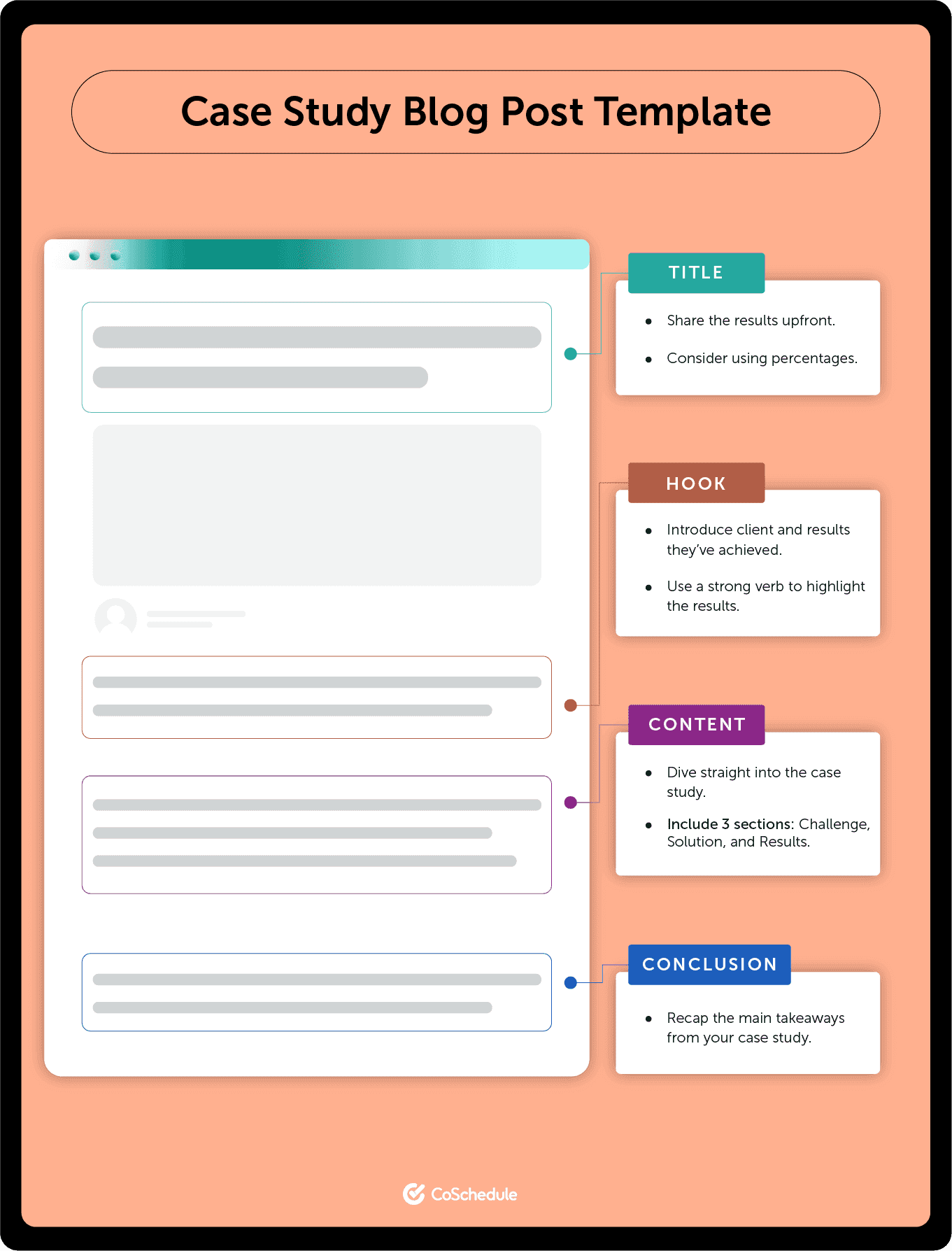
Case studies feature a business’s client using their product/service to achieve results. These posts are helpful for convincing prospects to try your product by educating them on how others are seeing bottom-line-improving results.
Title
An enticing case study title shares the results upfront. For example:
Two headline templates to try today:
- How [Business Name] achieved X Results by Y% Using [Your Tool]
- How [Business Name] achieved X Results by Y% In [Time Frame]
Hook
Briefly introduce your client and the results they’ve achieved. Make sure you use a strong verb to spotlight the results.
CoSchedule introduces the UofSC Alumni Association and details the outcomes.
Content
Dive straight into the case study by following these three sections: problem/challenge, solution, and results, as the example below does. Under each section, provide information on each topic.
Here’s more on writing winning case studies.
8. Definition Blog Post Template
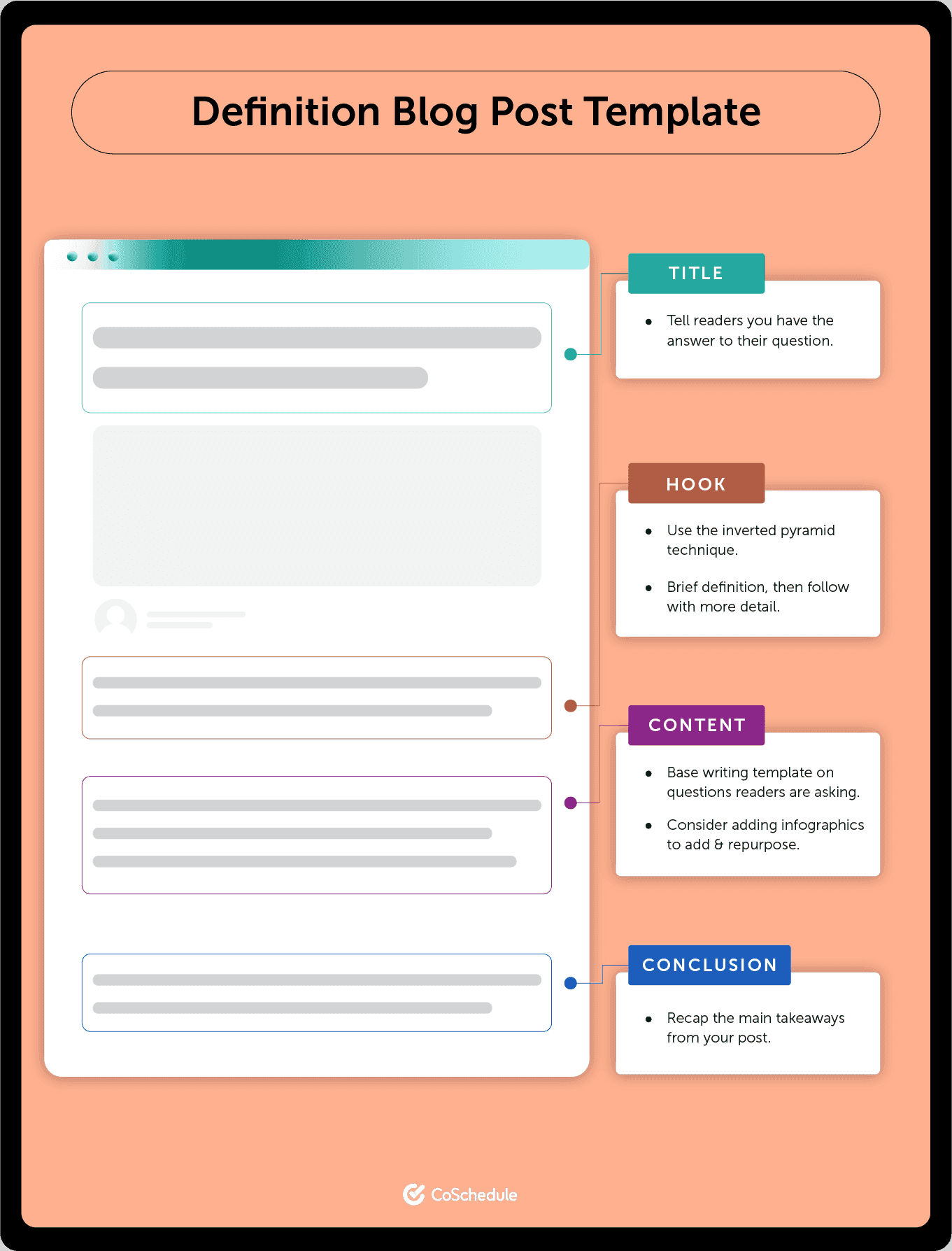
A definition blog post defines what a particular thing is while answering common questions about it. Be comprehensive with the definition so your post is a one-stop read for your audience.
Title
Use the keyword to tell readers you have the answer to their question. You can also pair this with other common questions your target readers have on the topic, as Podia did here:
In template format, we have the following:
- What Is X, [Important Question 1] What is X, [Important Question 2] What is X, Full Definition
Hook
Although you can start by prodding the problem, a better (more engaging) way is to use the inverted pyramid technique.
That is, provide a brief definition, then follow it with more detail. This gives readers an immediate answer and indicates you know the subject well enough.
Content
Base the definition blog post writing template on questions readers are asking on the topic. To this end, look at Google’s People Also Ask and Related Searches sections to find out sub-sections to add.
Take a look at the subheadings Podia has acquired:
As well as possible infographics to add & repurpose:
9. Myth-Buster Blog Post Template
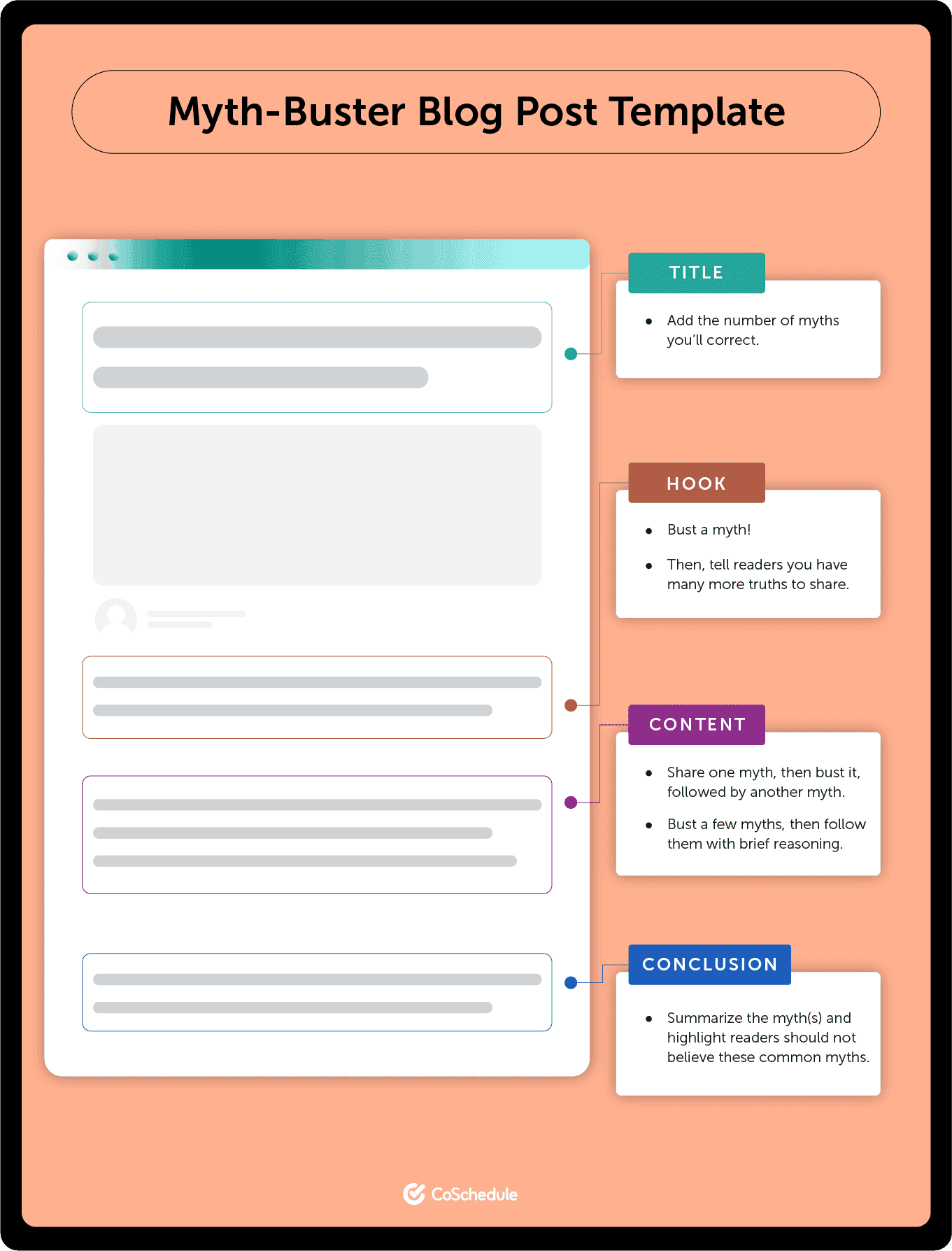
A myth-buster blog post challenges the authenticity of common misconceptions about a topic. Aim to provide accurate information and data with this type of post. It helps you position yourself as the topic authority.
Title
Add the number of myths you’ll correct. Either pair them with an avoid-this or tell readers they’d be surprised using the following templates:
- X [Power Word] Myths [Debunked By An Expert]
- X [Power Word] Myths You Won’t Believe Are False
- X [Power Word] Myths And Why They’re Wrong
- X [Power Word] Myths Debunked
In action:
Hook
For your hook, bust a myth. Then tell readers you’ve many more surprising truths to share as Usability Geek does:
Content
A readable format for this post type is sharing one myth and then busting it, followed by another myth, the truth, and so on.
Usability Geek indulges in several myths followed by brief reasoning.
Conclusion
Summarize the myth(s) and highlight that the readers should not believe these common myths, as Usability Geek shows:
10. Expert Roundup Blog Post Template
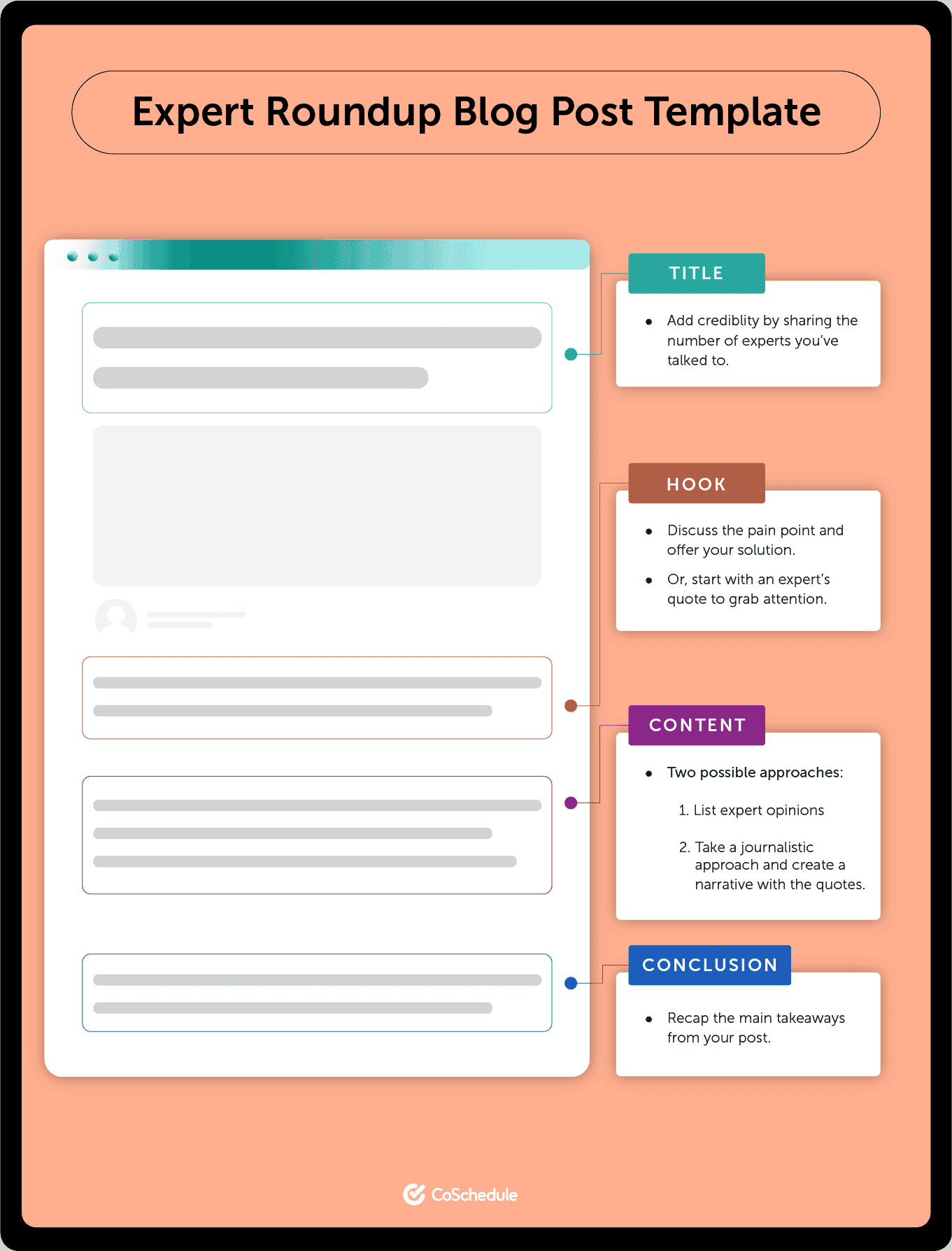
An expert roundup collates expert insights on a given topic. This type of content is a winner for bringing original takeaways to the table.
Title
Share the number of experts you’ve talked to get your readers’ attention and add credibility. The word “expert” itself is powerful.
These headline templates will help:
- How To [Keyword]: X Experts Share Their Insights
- X Experts On How To [Keyword/Topic]
- [Question]: X Experts Share How
Hook
Discuss the pain point and offer your roundup as the solution. Or, start with an expert’s quote to grab attention. For example, SELF introduces its expert roundup blog post similarly.
Content
There are two approaches you can take here. One, list the opinions shared along with the experts’ names and bio as SELF does:
Two, take a journalistic approach and weave a narrative around the quotes.
11. Beginner’s Guide Blog Post Template
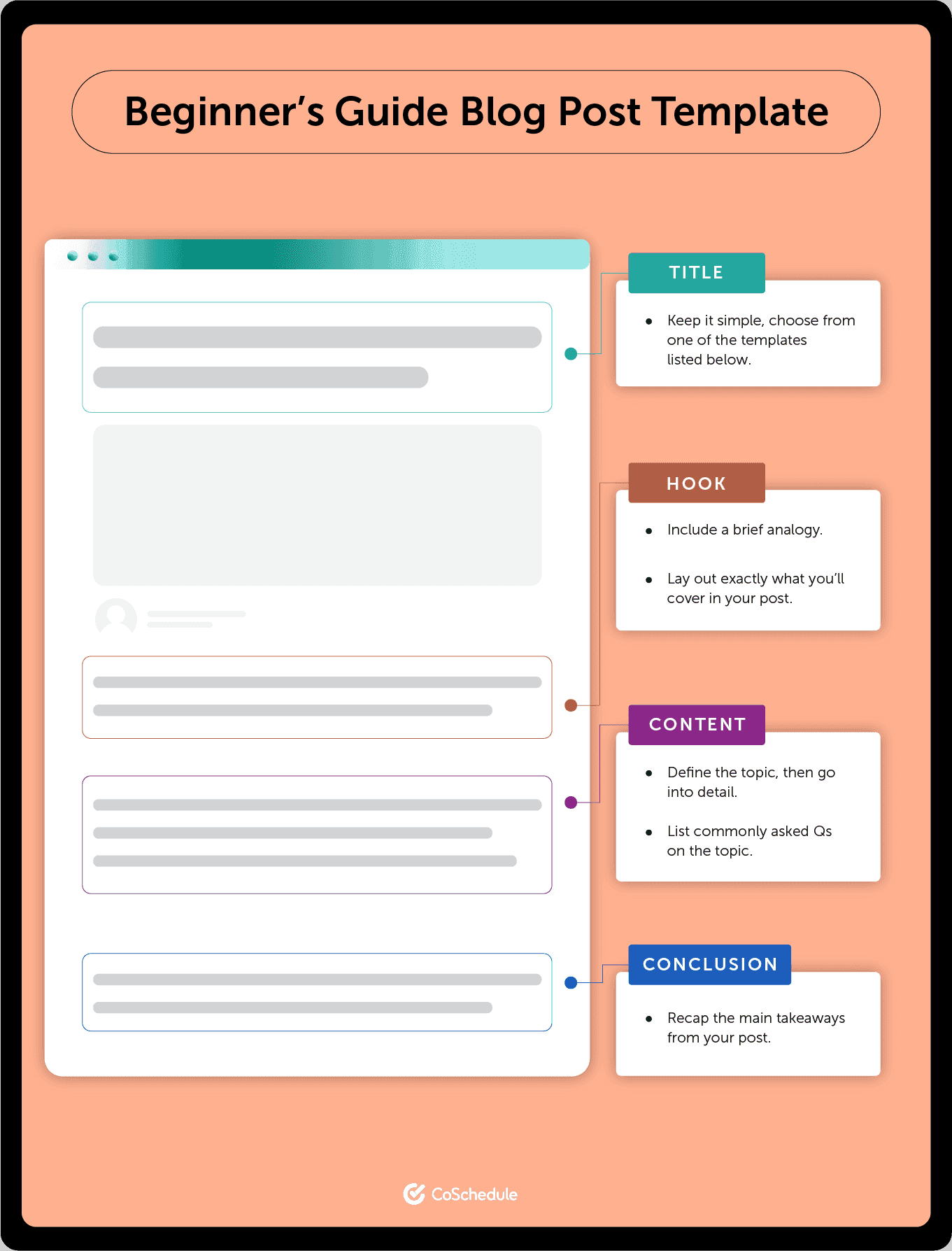
A beginner’s guide covers a topic thoroughly for people in their early learning stage. Eliminate overwhelming feelings by showing readers the steps to getting started. This type of blog post tends to attract social media shares.
Title
Writing titles for a beginner’s guide is pretty simple. Choose from these templates:
- The Beginner’s Guide To X
- [Topic/Keyword]: A Beginner’s Guide
- The [Power Word] Beginner’s Guide To X
Hook
A brief analogy makes a fitting hook for a beginner’s guide to establish credibility and trust between the reader and you. Lay out exactly what you’ll cover on the topic and add a table of content to make navigation easy.
For example, Ahrefs outlines topics that will be covered in this piece.
Content
Jumpstart with defining the topic, then go into detail. Find commonly asked questions on the topic to provide answers for your audience.
Ahrefs defines the topic, followed by supplemental chapters to go through.

Pro tip: Create an advanced guide and link it to your post so interested readers can level up their knowledge.
12. Infographic Blog Post Template
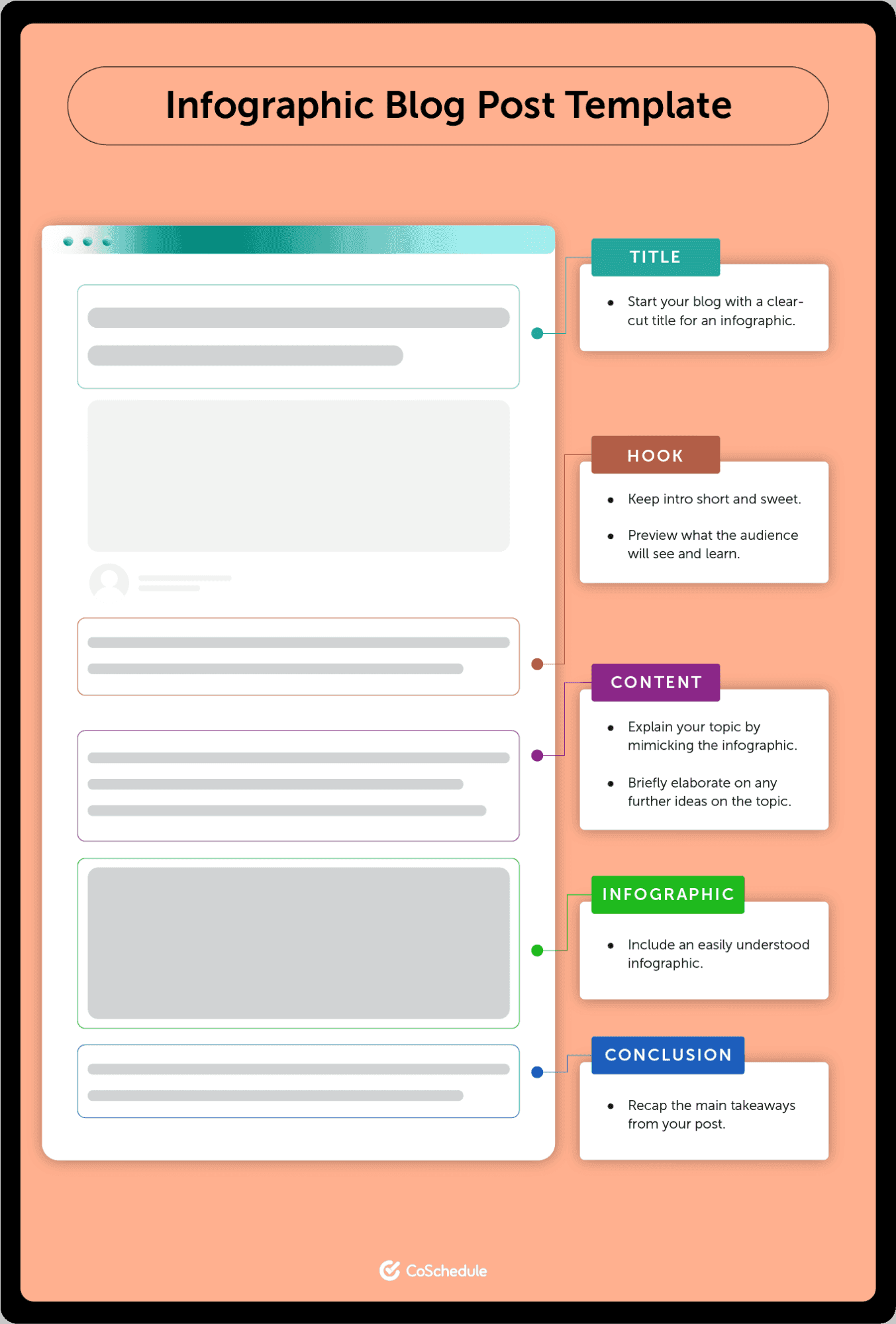
Infographics are attention-drawing graphics to increase shareability and engagement. Publish useful topics with shareable designs to visually represent the data or information.
Title
Start your blog with a clear-cut title for an infographic. Address that your blog includes an infographic as well.
Some title template ideas include:
- [Topic] With a Visual Guide
- [Topic] With Infographic
- Infographic Guide to [Topic]
Example: Healthsoul uses “Using Infographics” in the heading.
Hook
Keep your introduction short and sweet to let your infographic do the talking. Preview what the audience will see and learn throughout the piece.
Infographic
Make your infographic easily readable so readers understand the graphic. Include sources for data and even interactive pieces to enhance your infographic.
HealthSoul provides a guided infographic to inform the readers.
Pro tip: Repurpose your infographic on social media platforms to expand your reach.
Content
Explain your topic by mimicking the structure of your infographic. Briefly elaborate on any further ideas on your topic to ensure the users’ understanding.
Conclusion
Recap the information provided in your infographic and throughout the blog post. Include a download option for users to access the infographic outside the blog post.
13. Pillar Blog Post Template
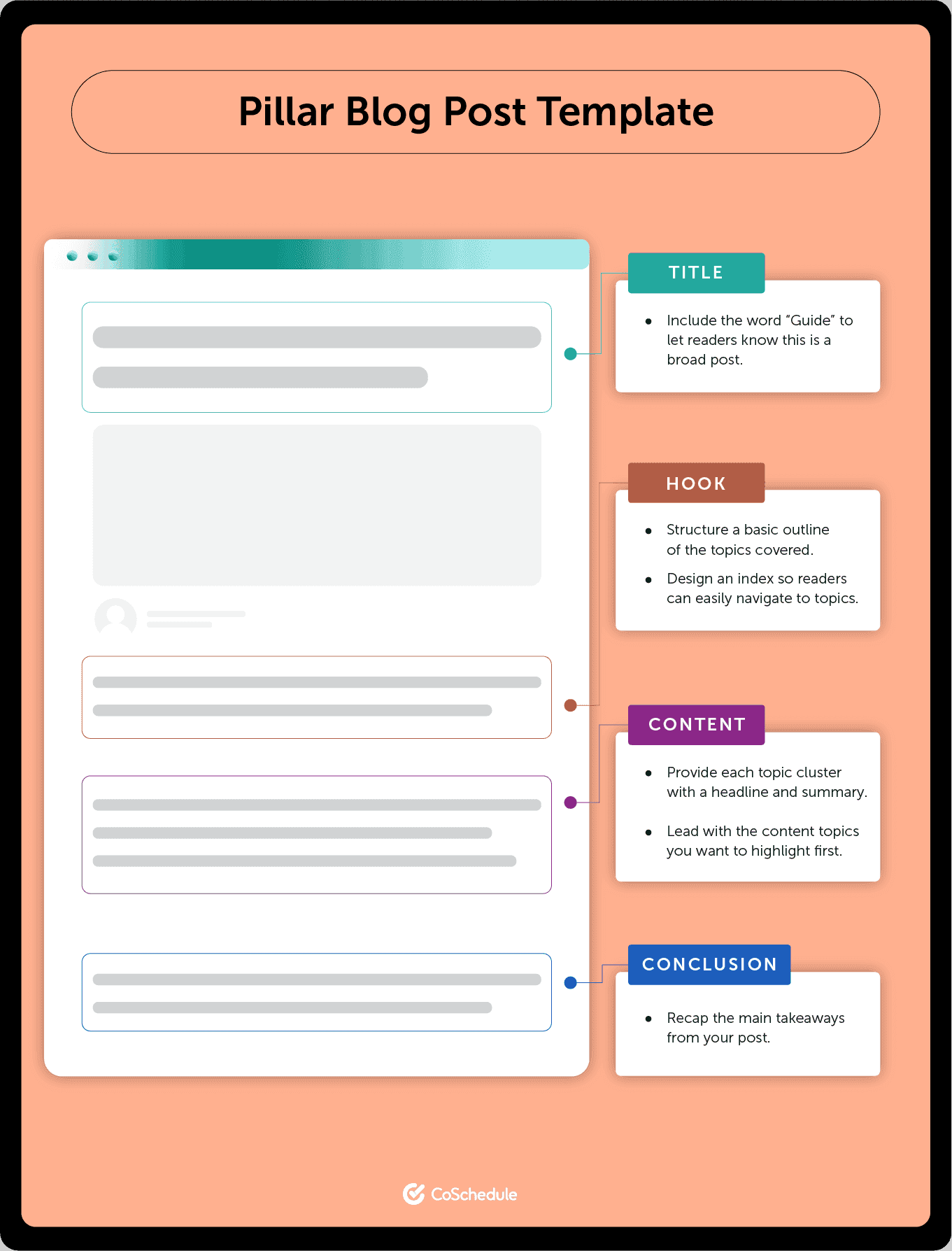
Create an “Ultimate Guide” hub page as a central overview of broad topics with links to more detailed and specific content. Pillar blog posts are a dominant resource to help with search engine ranking and website viewership.
Title
The title uses the word “Guide” to let readers know that this blog is a broad post. Try using general terms to cover all the subtopics.
Use these pillar title templates to get started:
- The Ultimate Guide to [Topic]
- [Target Word]: Everything You Need To Know
- Comprehensive Guide to [Topic]
Walk through The Growth Lab Ultimate Guide Example .
Starting with the title, you can see that they are creating a “Guide” for Profitable Business Ideas.
Hook
Structure a basic outline of the topics that will be covered. Design an index so readers can easily navigate to subtopics.
Growth Lab’s Ultimate Guide provides a framework of the topics covered with easy navigation links.
Content
Provide each topic cluster with a headline and a summary of their own. Lead with the content topics you want to highlight first and add additional internal links in each section.
Below you can see that Growth Lab has provided topic clusters followed by more information on each topic.
Conclusion
Finalize your piece with a wrap-up of the topics covered in this piece. Create a Call To Action to encourage readers to click on the internal links and further their understanding.
Recommended Reading: How to Create Content Hubs to Cover Competitive Topics
14. Newsjacking Blog Post Template
Capitalize on breaking news topics, from news updates to opinions on the matter. This point-of-view information will drive traffic to your site and increase engagement for relevant information.
Title
Include the event, announcement, or what the audience needs to know about this news update. In addition, add a snippet of what information you will include.
Title ideas for a Newsjacking Blog:
- [News Topic]: What You Need To Know
- Opinions on [News Topic]
Example: Microsoft released this blog post after COVID-19 stalled NBA sporting events by not allowing fans to attend games.
Microsoft took this opportunity to launch “Together Mode” to pull participants into a virtual reality mimicking the sensation of being together. They partnered with the NBA to simulate the crowd experience.
Hook
Build a news brief on how this event affected the readers and how others responded. Keep this section short, as readers want an overview of the event with linked sources and dates to obtain credibility.
Content
Organize the meat and potatoes of your news update with bold headings for readers to skim and find the information they want to read. For example, you can organize the subheadings by:
- Background information/history
- Additional details or answers to commonly asked questions
- Different perspectives or opinions
- Actions or recommendations for the readers to take in response to this event
Different opinions from the NBA fans allowed Microsoft to react and recommend Together Mode for the NBA audience and other remote situations.
Conclusion
Wrap up your blog with a summary of the news topic and your overall consensus. Mention all the subheadings and add additional links to external resources to advance the reader’s knowledge.
Pro Tip: Mass share your news update on social media channels to engage other viewers.
15. Things To Do Before, During, Or After “X” Blog Post Template
Outline actionable steps for your audience to take before, during, or after an activity. Create a game plan for a time when people need more information to establish trusting and long-term relationships with customers.
Recommended: Essay Outline Generator and Free Essay Humanizer
Title
Mention the activity with the number of steps they need to complete it.
Here are some title templates to review:
- # Things [Topic] Before/During/After [Activity]
- # Things You Should Do Before/During/After [Activity] to [Benefit]
- The # Best and Worst Things To Do Before/During/After [Activity]
For example, “10 Things Healthy People Do Before Going To Work Every Day” shows the number of steps to do before the activity.
Hook
Start with a visualization of the activity followed by a sneak peek of the actions to do before, during, or after. Assure your readers that you’ll show them how to do the actions you’re outlining. In the hook for his Lifehack article they are setting the scene for the steps.
Content
Share each step as a subheading for the reader to follow along. Within each step, highlight examples with a detailed description.
Pro Tip: Sprinkle in images of each step to visually show readers how to do the action.
Lifehack outlines the steps to take before going to work.
Conclusion
Remind your reader what they do before, during, or after an activity is essential for success. Feature the best tips from the post with a call to action so readers utilize the steps.
16. Product Review Blog Post Template
Post a blog about your review of a product; easy peasy. Product reviews inform customers to feel more confident and form a trusting relationship between you and the reader. According to a 2022 survey, 98% of people at least ‘occasionally’ read online reviews for local businesses.
Title
State the product name you will review and include “Review” in the title. Stand out from other titles with a short blurb of your review or the year to create consumer interest in your post.
Review CNET’s Review of HelloFresh in this case study example:
In addition to this example, here are some different title templates:
- [Product] Review: [Overview of Opinion]
- [Product]: Review and Rating
- Review and Demonstration of [Product]
Hook
Establish authority with the audience as a reviewer by creating empathy with readers. Share an overview of the product and the features you will cover. Make it obvious if you recommend the product, and share the pros and cons. CNET’s hook provides an overview of HelloFresh and a short description of what they will address in the review.
Content
Product Reviews are based on your opinions, so organize the subheadings in a way that suits you. One of the options that you can use as an outline is:
- Background on the product
- Review of the main features
- Product Pros & Cons
- Results that the product helped you achieve
Keep data and facts accurate to maintain credibility and engage the reader with your personalization.
Below are some examples of subtitles that CNET used in the body paragraphs.
Pro Tip: Include a review of the main features to allow readers to look for the parts they are most interested in.
Conclusion
Conclude with a recap of the product and highlight the main beneficial features. Reiterate your recommendation with a strong closing call to action.
CNET concludes this blog post with its final recommendation while highlighting key features.
This blog post was originally written in February 2022 by Masooma Memon. It was updated in January 2024 by Paige Nordstrom.


